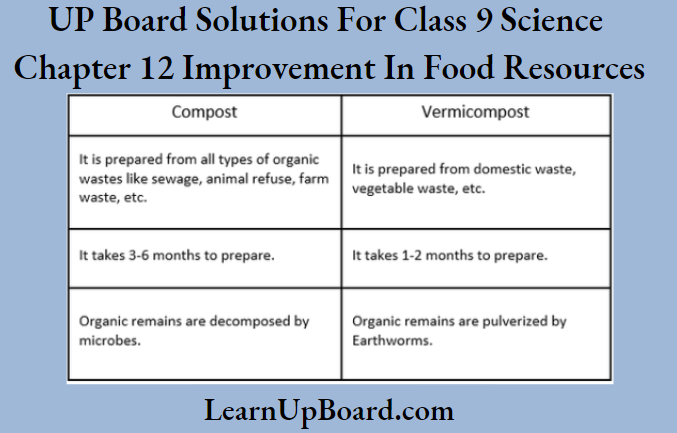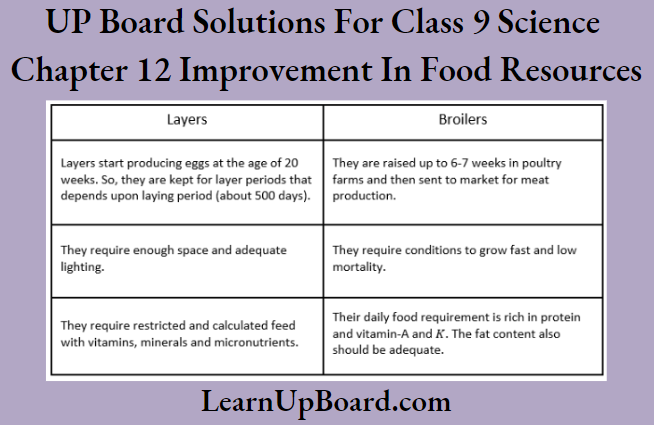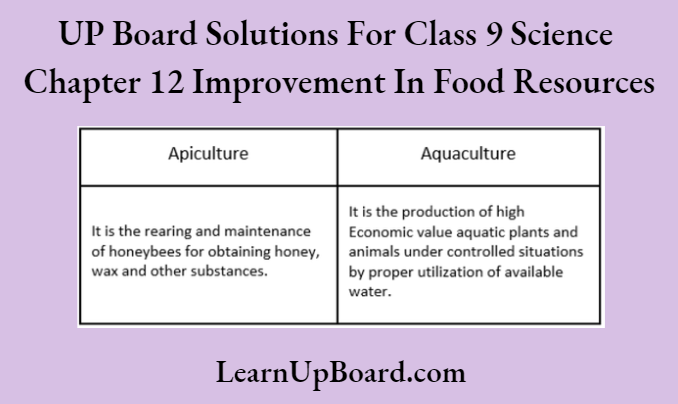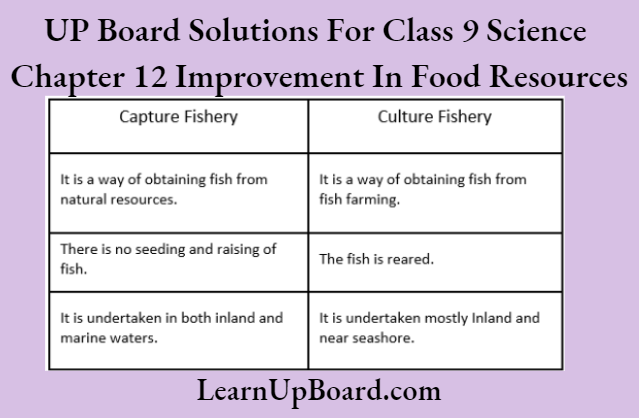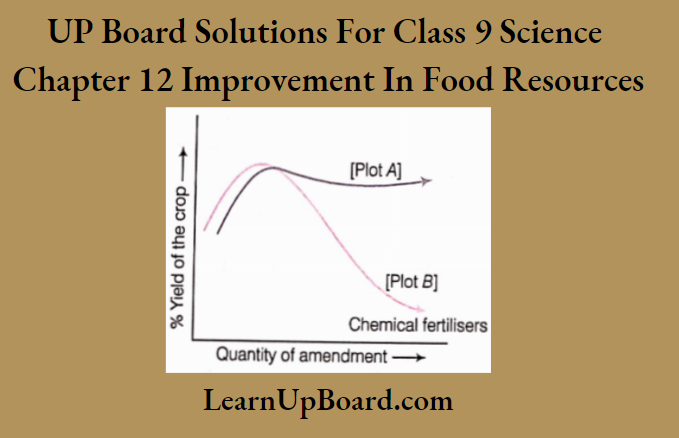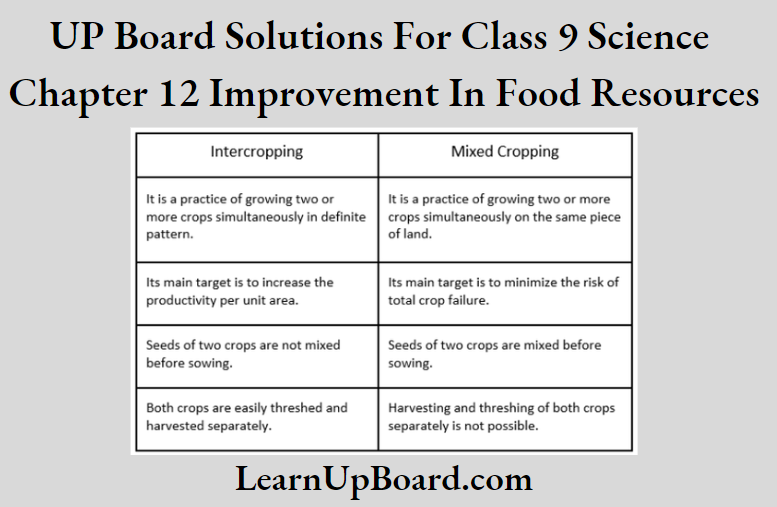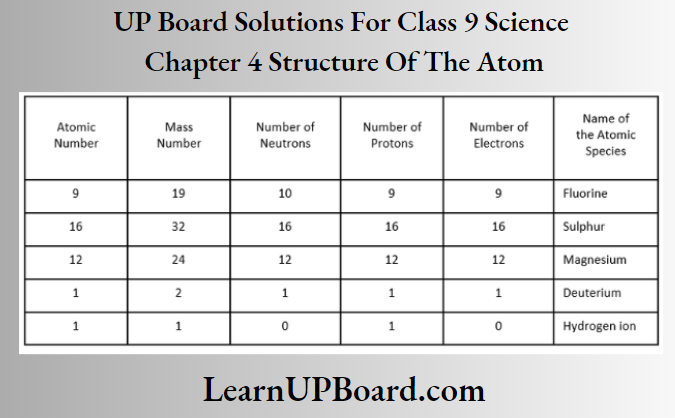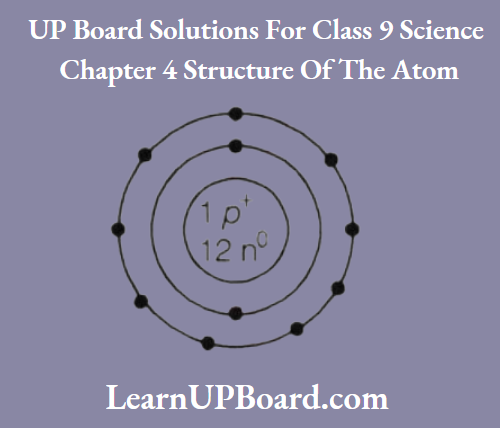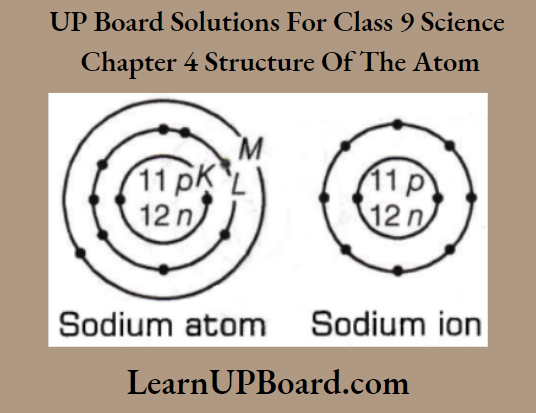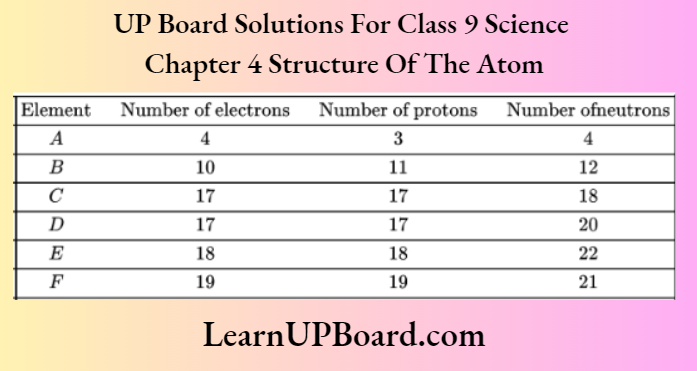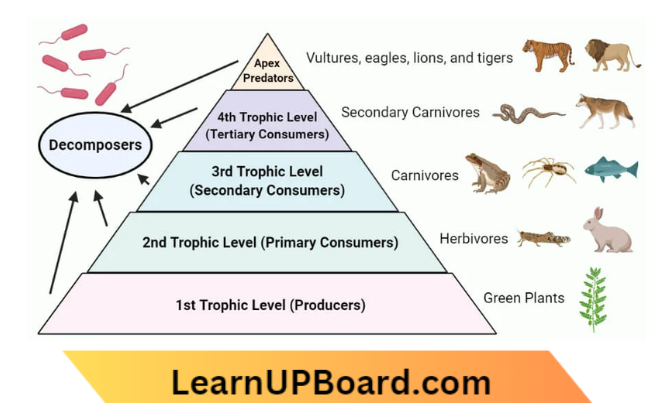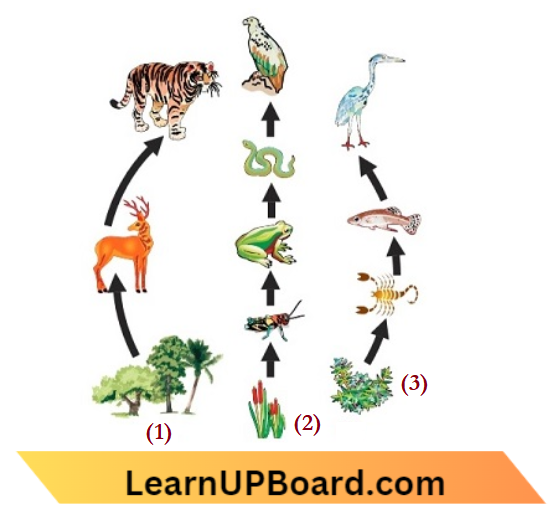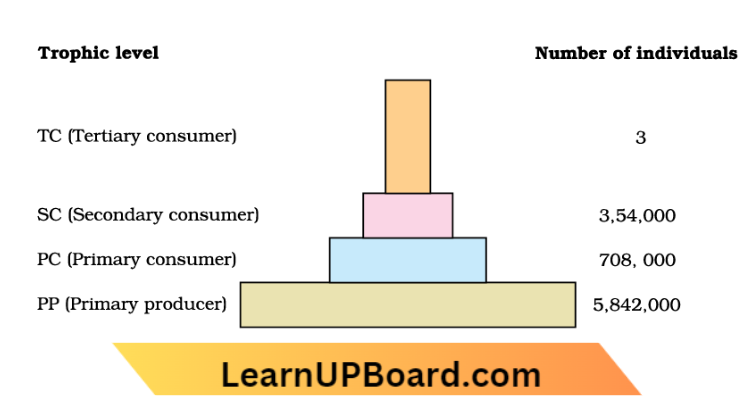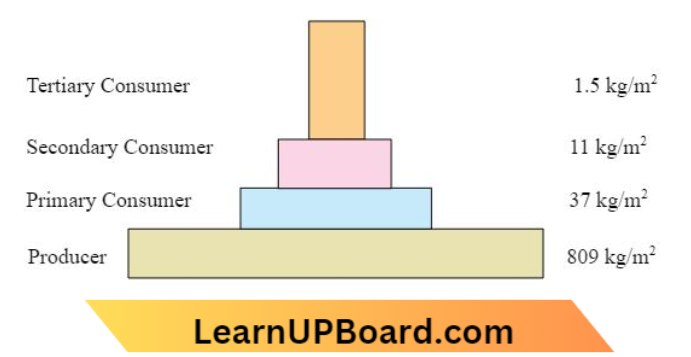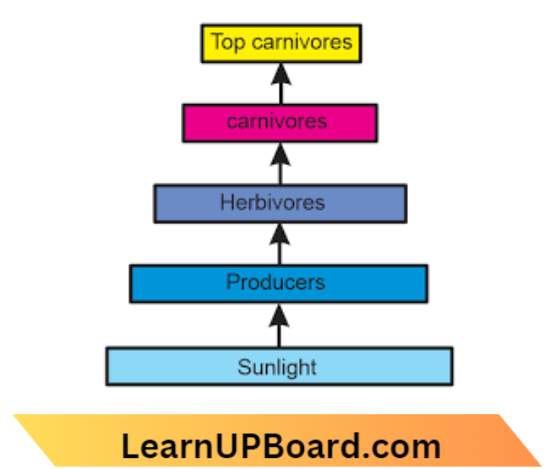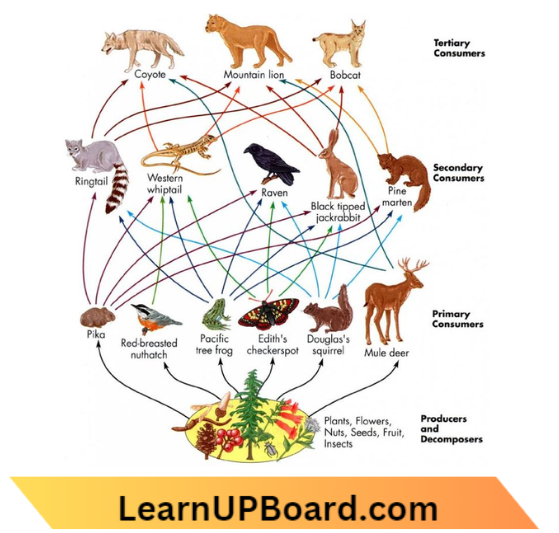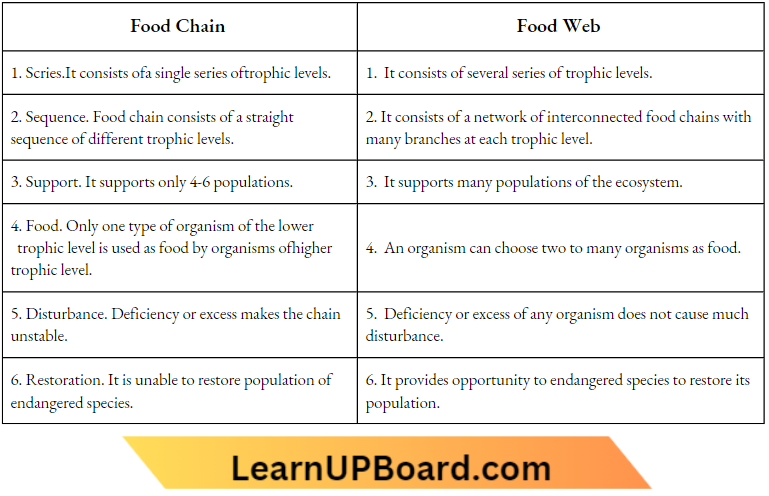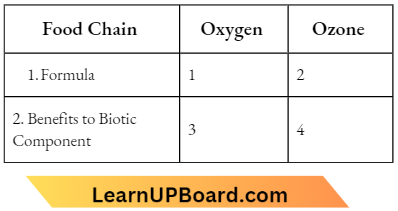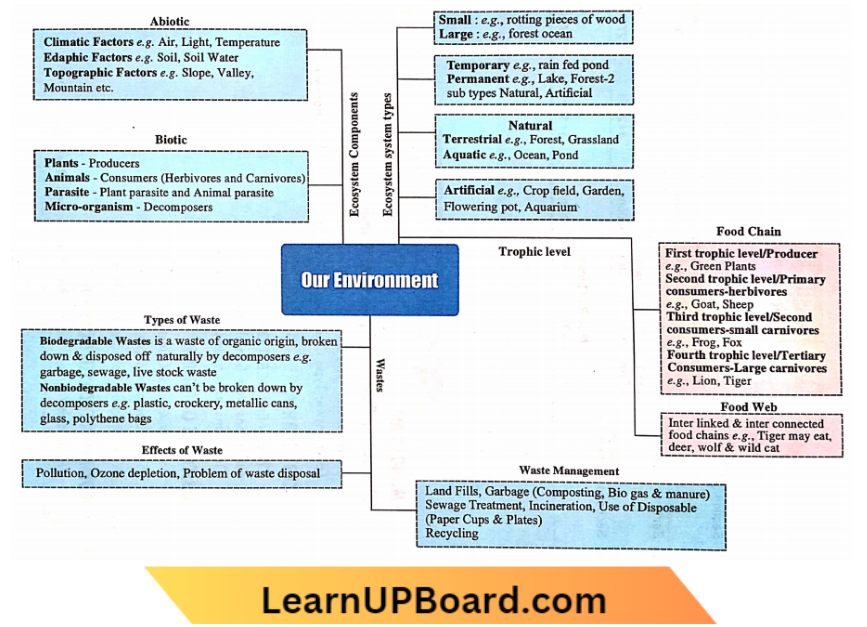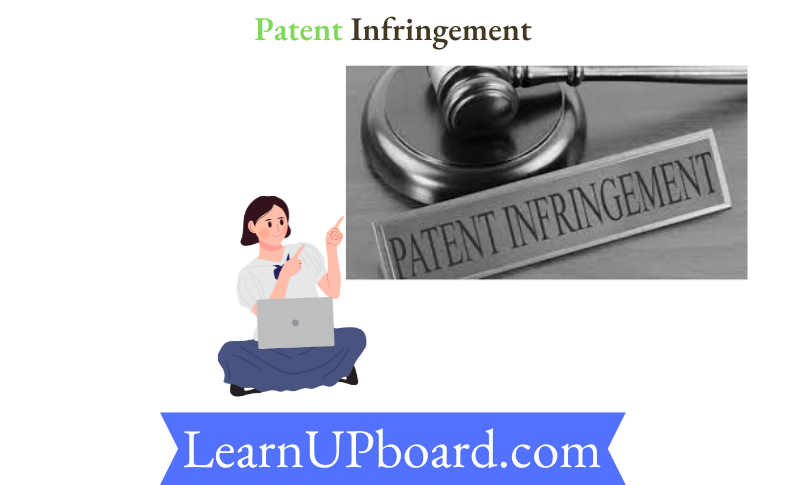Trademarks Question And Answers
Question 1. Concerning the relevant legal enactments, write short notes on the following: Well-known trademark
Answer:
Well-known trademark:
A Well-known trade mark about any goods or services is a mark that has become so popular among the public that uses such goods or services that the use of such mark about other goods or services, would be likely to be taken as indicating a connection between the goods & services and the first mentioned goods or services.
Question 2. Concerning the relevant legal enactments, write short notes on the following: Collective trademark
Answer:
Collective trademark – A collective trademark means a trademark distinguishing the goods or services of members of an association of persons, which is the proprietor of the mark, from those of others.
The application for registration of the collective mark should be accompanied by Regulations for use of the collective mark, specifying persons authorized to use the mark, conditions of membership, and conditions for use of the mark including sanction against misuse, and other prescribed matters.
Question 3. Concerning the relevant legal enactments, write short notes on the following: Inherently distinctive marks
Answer:
Inherently distinctive marks
A trademark acts as a sign that is capable of distinguishing the goods or services of one trading entity from another, at the very least it has to be an inherently distinctive mark.
In the case of Imperial Tobacco Co. of India v. The Registrar of Trade Marks, AIR 1977 Calcutta 413 the Calcutta High Court held that the essential conditions of a trademark concerning goods proposed to be registered are distinctive or if not distinctive, or capable of distinguishing the goods as aforesaid, there may be some inherent qualities or distinguishing characteristics in the mark itself which may mark it so distinctive or capable of such distinguishing the goods of the applicant from others
Regarding the relevant legal enactments, write short notes on the following:
- Inherently distinctive marks
- A trademark acts as a sign that is capable of distinguishing the goods or services of one trading entity from another, at the very least it has to be an inherently distinctive mark.
Trademarks Question And Answers Distinguish Between
Distinguish between the following:
Question 1. ‘Certification trademarks’ and ‘collective trademarks’.
Answer:
Certification trademark – The certification trademark with goods means the mark which is used to show that the goods on which the mark appears are certified by some competent person in respect of certain characteristics of the goods such as origin, mode of manufacture, quality, etc. A certification trademark can be used in addition to the user’s own trademark 1114 on his goods.
Collective Trade Marks:
Question 2. Distinguish between the following: Trademark’ and ‘certification trademark’.
Answer:
Difference Between Trademark’ and ‘certification trademark’
The distinction between Trade Mark and Certification Trade Mark The term Trade mark has been defined under Section 2(1)(zb) of the Trade Marks Act, 1999 as a mark capable of being represented graphically and which is capable of distinguishing the goods or services of one person from those of others and may include the shape of goods, their packaging, and combination of colors; and a registered trademark or a mark used concerning goods or services to indicate or to indicate a connection in the course of trade between the goods or services, as the case may be, and some person having the right as proprietor to use the mark; and with other provisions of the Act, a mark used or proposed to be used with goods or services to indicate or so to indicate a connection in the course of trade between the goods or services, as the case may be, and some person having the right, either as proprietor or by way of the permitted user, to use the mark whether with or without any indication of the identity of that person and includes a certification trade mark or collective mark.
Certification Trade Mark:
Section 2(1)(e) of the Trade Marks Act, 1999 defines the term certification trademark as a mark capable of distinguishing the goods or services in connection with which it is used in the course of trade which are certified by the proprietor of the mark in respect of origin, material, mode of manufacture of goods or performance of services, quality, accuracy or other characteristics from goods or services not so certified and registrable as such in respect of those goods or services in the name, as proprietor of the certification trade mark, of that person.
Question 3. Distinguish between the following: ‘Registered proprietor of a trademark’ and ‘registered user of a trademark’.
Answer:
Difference Between ‘Registered proprietor of a trademark’ and ‘registered user of a trademark’.
The registered proprietor of a trademark means the person for the time being entered in the register as proprietor of the trademark. In other words, a registered proprietor is simply the person whose name appears in the register containing the name of the owner proprietor of the trademark.
According to the provisions of Section 37 of the Trademark Act, the proprietor has an absolute right to assign the trade mark and thus as a consequence, the person to whom such rights to use the trademark arise becomes the ‘registered user’ of the trademark.
Section 49 Provides for registration as a registered user.
Section 50 deals with the power of the registrar to vary or cancel registration as a registered user on the ground that the registered user has used the trademark otherwise than under the agreement or used in such a way that is likely to cause confusion or registered user has failed to disclose any material fact.
Section 50 empowers the registrar to require the proprietor to confirm at any time during the continuation of registration as a registered user whether the agreement based on which the registered user was registered is still in force and if the reply is not received within 1 month then remove the name from the register.
Question 4. Distinguish between the following:‘Infringement of trademark’ and ‘passing off.
Answer:
Difference Between ‘Infringement of trademark’ and ‘passing off
Infringement of trademark:
Section 29 of the Act states that a registered trademark is infringed by a person who, not being the registered proprietor of the trademark or a registered under thereof using by way of permitted use, uses in the course of trade a mark which is identical with, or deceptively similar to, the trade mark, concerning any goods in respect of which the trade mark is registered and in such manner as to render the use of the mark likely to be taken as being used as a trade mark.
Accordingly, to constitute an infringement, the act complained of must fulfill the following requirements:
- The mark used by the person must be either identical with or deceptively similar to the registered trademark.
- The goods in respect of which it is used must be specifically covered by the registration;
- The use made of the mark must be in the course of trade in areas covered by the registration,
- The use must be in such a manner to render it likely to be taken as being used as a trademark. Whenever misuse of a trademark occurs, the proprietor can either, file a civil suit or file a criminal complaint under Sec. 134, suit for infringement, etc., to be instituted before the District Court of the Act.
- After examination of the complaint and in some cases after verification by the complainant, the Court issues an order directing the Crime Branch of the Police to search and seize offending goods, labels, and other materials.
- Wherever there is the slavish imitation of a trademark, it is advantageous to resort to criminal complaint ratherthan undergo the long and cumbersome process of a civil suit.
- The advantage of a criminal complaint is that it has immediate effect i.e., the premises of the suspected parties manufacturing, storing, selling, or offering for sale spurious goods, can be raided and the spurious goods can be seized.
- The problem involved in filing a criminal complaint is to obtain the cooperation of the enforcement authorities for timely and effective action.
- A criminal complaint can be filed even if a trademark is not registered. If the complainant can prove to the satisfaction of the Court that his mark enjoys sufficient reputation, the Court will issue a search and seizure order.
- By and large, in practice, a Magistrate is not inclined to grant the relief unless the complainant’s mark is registered.
Passing off:
- Passing off is the infringement of a trademark, which is done in a manner where the trademark is not only deceptively similar to the trademark of other companies but also creates confusion for customers.
- Factors that are considered while deciding on action for passing off include the nature of trade mark, degree of resemblances between the trademark, etc.
Question 5. Distinguish between the following: ‘Assignment of a trademark’ and ‘transmission of a trademark’ under the Trade Marks Act, 1999.
Answer:
Difference Between ‘Assignment of a trademark’ and ‘transmission of a trademark’ under the Trade Marks Act, 1999
- Section 37 entitles the registered proprietor of a trademark to assign the trademark for any consideration for such assignment. Section 39 provides that unregistered trademarks may be assigned or transmitted.
- Section 40 contains restrictions on assignments or transmission of trademarks where multiple exclusive rights would be created in more than one person concerning the same goods & services.
- The assignment is not deemed to be invalid if having regard to the limitation imposed, the goods are to be sold in different markets – either within India or through export.
- A certification trademark can only be assigned with the consent of the registrar.
Question 6. Distinguish between the following: ‘Trademark’ and ‘certification trademark’.
Answer:
Difference Between ‘Trademark’ and ‘certification trademark’
Distinction between Trade Mark and Certification Trade Mark The term Trade mark has been defined under Section 2(1)(zb) of the Trade Marks Act, 1999 as to mean a mark capable of being represented graphically and which is capable of distinguishing the goods or services of one person from those of others and may include the shape of goods, their packaging, and combination of colors; and A registered trade mark or a mark used concerning goods or services to indicate or to indicate a connection in the course of trade between the goods or services, as the case may be, and some person having the right as proprietor to use the mark; and Concerning other provisions of the Act, a mark used or proposed to be used concerning goods or services to indicate or so to indicate a connection in the course of trade between the goods or services, as the case may be, and some person having the
Attempt of the following:
Question 1. What are the acts that do not amount to infringement of a trademark under the Trade Marks Act, of 1999?
Answer:
Following are the acts that do not amount to infringement of a trademark under Section 30 of the Trade Marks Act, 1999
- If there is some restriction or limitation when the trademark is registered and if the trademark is used in a manner that is outside the scope of registration.
- Concerning parts or accessories of goods/products.
- To indicate the kind of quality of the product.
Question 2. Explain registered the provisionstrade marks of the Trade
Answer:
Section 29 enumerates the grounds which constitute infringement of a trademark. When a trademark is used by a person who is not entitled to use such a trademark under the law, it constitutes infringement.
A trademark is infringed if:
- The mark is identical and is used in respect of similar goods or services.
- The mark is similar to a registered trade mark and there is an identity of goods & services covered by trade mark.
- The trademark is identical and is used concerning identical goods or services and such use is likely to confuse the part of the public.
- Advertising of a trademark to take unfair advantages also constitutes infringement of a trademark.
- Where the registered trademark consists of words, the spoken use of such words as well as visual representation for promoting the sale of goods would constitute infringement of the mark.
Question 3. What are the circumstances under which a registered trademark is deemed to be infringed under the Trade Marks Act, of 1999?
Answer:
The circumstances under which a registered trademark is deemed to be infringed under the Trade Marks Act, of 1999
Section 51 of the Copyright Act, 1957 conterripIntOB olluollon In which n copyright shall be deemed to be Infringed.
This Section says that a copyright is infringed when any person without a license granted by the owner of the copyright or the Registrar of Copyright or In contravention of the conditions of a license so granted or of any condition imposed by a competent authority does
Anything for which the exclusive right is conferred upon the owner of the copyright, or Permits for profit any place to be used for the communication of the work to the public where such communication constitutes an Infringement of the copyright in the work unless he was not aware and had no reasonable ground for believing that such communication would be an infringement of copyright.
When any person makes for sale or hire or lets for hire or by way of trade display or offers for sale or hire, or distributes either for trade or to such an extent as to affect prejudicially the owner of the copyright, or by way of trade, exhibits in public, or Imports into India any infringing copies of the work.
However, the import of one copy of any work is allowed for the private and domestic use of the importer. Explanation to Section 51 clarifies that the reproduction of literary, dramatic musical, or artistic work in the form of cinematograph film shall be deemed to be an infringing copy.
Question 4. State the absolute grounds for refusal of registration of trademarks.
Answer:
The absolute grounds for the refusal of registration are the trademark which is devoid of any distinctive characteristic.
- The trademark designates the kind, quality, quantity, etc.
- The mark that has become customary is the current language.
- Telly Toy brought into the market a play toy named “Jump Bhola”, an aspiring balance, in which children can stand and jump. It became very popular among the kids. The spring was, however, made up of plastic, and hence it had many practical problems.
Question 5. Mera Khilona, another competitor company, came up with a similar toy with a different name “Jump Bheem” made of a material that solved all the practical problems that “Jump Bhola”, had. Keeping the above in view, answer the following:
- Can Mera Khilona claim patent protection for its product?
- Assuming that Mera Khilona adopted the same logo and style of writing as that of Telly Toy, can Mera Khilona claim trademark protection for its product?
Answer:
- What is Patent
- A patent is an exclusive right granted to a person who has invented a new and useful article an improvement of an existing article or a new process of making an article.
- The exclusive right is to manufacture the new article invented or manufacture an article according to the invented process for a limited period.
- During the term of the patent the owner of the patent, i.e. the patentee can prevent any other person from using the patented invention.
- Invention must be New and Useful It is a fundamental principle of Patent Law that a patent monopoly is granted only for inventions that are new and useful and which have industrial applications.
- This is embodied in the definition of “invention”. The question of whether a particular invention is new and useful is often extremely difficult to decide as it depends upon the state of the prior art in the particular field which includes prior publication on the subject and prior user.
- Invention
- As per Section 2(1) of the Patents Act, 1970: ‘Invention’ means a new product or process involving an inventive step and capable of industrial application.
- Under Section 2(1)(a) of the Patents Act, 1970: ‘Inventive step’ means a feature of an invention that involves technical advance as compared to the existing knowledge or having economic significance or both and that makes the invention not obvious to a person skilled in the art.
- As per Section 2(1)(l) of the Patents Act, 1970: New invention’ means any invention or technology which has not been anticipated by publication in any document or used in the country or elsewhere in the world before the date of filing of patent application with complete specification, i.e. the subject -matter has not fallen in public domain or that it does not form part of the state of the art.
Subject — Matter of Invention The question of whether there is an invention is a question of fact in each case. A new and useful application of an old principle may be a good subject matter.
An improvement on something known may also afford subject -matter; so also a new combination of different matters already known. A patentable combination is one in which the component elements are so combined as to produce a new result or to arrive at an old result in a better more expeditious or more economical manner.
Improvements The definition of the invention includes within its scope any new and useful improvement of any manner of manufacture, article, or substance whether patented or otherwise. However, the improvement to be patentable must independently satisfy the test of the invention.
In the present case, M/s Mera Khilona came up with the same Toy but with a material that solved the pre-existing practical problem, and hence with improvements qualifying the test of invention Mera Khilona can claim Patent in the present matters. The law of trademark, practically all over the world is based on three broad concepts:
Distinctiveness or distinctive character capable of distinguishing, Deceptive similarity or similarity or near resemblance of marks, and Same descriptive or similarity of goods. The purpose of the Act, as stated in the preamble, is to provide for the registration and better protection of trademarks for goods and services and to prevent the use of fraudulent marks.
In consonance with this object, the following fundamental principles of trademark law are embodied in the various provisions of the Act: Since registration confers on the proprietor a kind of monopoly right over the use of the mark, which may consist of a word or symbol legitimately required by other traders for bona fide trading or business purposes, certain restrictions are necessary on the class of words or symbols over which such monopoly right may be granted. This principle is recognized in the qualifications for registration laid down in Section 9.
Registration of a trademark should not interfere with the bona fide use by other persons of names or words in ordinary usage. This principle is embodied in Section 13 and Section 3.
Property rights in a trademark acquired by use are superior to similar rights obtained by registration under the Act; this is clear from the preamble which refers to “better protection of trade marks”, thereby necessarily implying the existence and availability of some protection under common law.
It, therefore, follows that prior users of trademarks should be protected against any monopoly rights granted under the Statute. This principle is enacted in Section 34. There are two main interests to be protected when a mark is presented for registration.
There is first the interest of the public. A trademark ought not to be registered if its use will be apt to mislead the public as to the origin of the goods they are purchasing.
There are also the interests of other existing traders who are entitled to object if the use of the trademark proposed for registration will be calculated to enable the applicant’s goods to be passed off to the public as other traders’ goods. These interests are protected by Sections 9 and 11.
Given the above M/s Mera Khilona will not be able to claim trademark protection for its products as it was likely to create confusion among the general public and customers as the conflicting trademark being in the same business.
Question 6. Explain the ‘deceptive similarity of a trademark’ with an example.
Answer:
‘Deceptive similarity of a trademark’
The deceptive similarity of Trade Mark is that a given two trademarks are such their nature that it is likely to deceive the public or cause confusion.
The following examples will clarify the position of deceptive similarity:
- Lakshmandhara and Amrit Dhara are deceptively similar.
- “Simatul” is likely to confuse and Deceptively similar to “Cibatul”.
- ‘Trevicol” was held to have Phonetically deceptive similarity to “FEVICOL”.
In Cadila Healthcare Ltd. Vs. Cadila Pharmaceutical LTD., the Supreme Court held that in an action for passing off on the basis of an unregistered trademark generally for deciding the question of deceptive similarity the following factors are to be considered:
- The nature of the marks i.e. whether the marks are word marks label marks or composite marks, i.e. both words and label works.
- The degree of resemblance between the marks is phonetically similar and hence similar in idea.
- The nature of the goods in respect of which they are used as trademarks;
- The similarity in the nature, character, and performance of the goods of the rival traders;
- The class of purchasers who are likely to buy the goods bearing the marks they require, on their education and intelligence and a degree of care they are likely to exercise in purchasing and/or using the goods;
- The mode of purchasing the goods or placing orders for the goods; and
- Any other surrounding circumstances which may be relevant in the extent of dissimilarity between the competing marks.
The weightage to be given to each of the aforesaid factors depends upon the facts of each case and the same weightage cannot be given to each factor in every case.
Note: “In answers to the questions based on case study, the students may write any other alternative answer with valid reasoning.”
Question 7. What rights are conferred by the registration of a trademark?
Answer:
Registration of a Trade Mark confers the following rights on the registered proprietor:
- It confers on the registered proprietor the exclusive right to the use of the trademark with the goods or services in respect of which the trademark is registered.
- If the trademark consists of several matters, there is an exclusive right to the use of the trademark taken as a whole.
- It entitles the registered proprietor to obtain relief in respect of infringement of the Trade Mark in the manner provided by the Trade Marks Act, 1999 when a similar mark is used on
- Same goods or services,
- Similar goods or services,
- In respect of dissimilar goods or services.
- Registration of a Trade Mark forbids every other person (except the registered unregistered permitted user) to use or to obtain the registration of the same Trade Mark or a confusingly similar mark about the same goods or services or the same description of goods or services about which the Trade Mark is registered.
- After registration of the Trade Mark for goods or services, there shall not be registered the same or confusingly similar trade mark not only for the same goods or services but also in respect of similar goods or services.
- Moreover, after registration of the trademark for goods or services, there shall not be registered the same or confusingly similar trademarks even in respect of dissimilar goods or services.
- Registered Trade Mark shall not be used by anyone else in business papers and advertising. The advertising should not be detrimental to the distinctive character or reputation of the trademark.
- There is a right to restrict the import of goods or services marked with a trademark similar to one’s trademark.
- There is a right to restrain the use of the trademark as a trade name or part of the trade name or name of a business concern dealing in the same goods or services.
Question 8. ’Passing off is a common tactic to use in a similar trade mark.
- Describe the typical actions and trademark violations in ‘passing off an action of publicizing a body called ‘The University of Universal Learning’.
- Is it possible to resort to ‘passing off petition in an unregistered trademark?
- Does the Trade Marks Act, 1 999 govern an act of ‘passing off? If yes, why, and if no, why not?
Answer:
A cause of action for passing off is a form of intellectual property enforcement against the unauthorized use of a mark that is considered to be similar to another party’s registered or unregistered trademarks, particularly where an action for trademark infringement based on a registered trademark is unlikely to be successful (due to the differences between the registered trademark and the unregistered mark).
Passing off is a form of common law, whereas statutory law as such provides for enforcement of registered trademarks through infringement proceedings.
Passing off and the law of registered trademarks deal with overlapping factual situations, but deal with them in different ways. Passing off does not confer monopoly rights to any names, marks, or get-ups.
It does not recognize them as property in its own right. Instead, the law of passing off is designed to prevent misrepresentation in the course of trade to the public. A civil suit can be initiated under the law of passing off in respect of an unregistered trademark.
The suit for passing off can be initiated either in the District Court or in the High Court depending on the valuation of the suit.
The suit can be at the place where the rights holder or one of the rights holders actually and voluntarily resides or works for gain or carries on business.
In the given case, a civil suit can be initiated against the University of Universal Learning for an action of passing off.
The Indian trademark law statutorily protects trademarks as per the Trade Marks Act, 1999, and also under the common law remedy of passing off.
The passing off is a common law of tort that can be used to enforce unregistered trademark rights. Passing off action arises when an unregistered trademark is used by a person who is not the proprietor of the said trademark concerning the goods or services of the trademark owner.
It is a tort and actionable under common law. Section 27 of the Trade Mark, 1999 provides that no infringement action will lie in respect of an unregistered trademark but recognizes the common law rights of the trademark owner to take action against any person for passing off their goods or services.
Section 134 of the Trade Marks Act, 1999 provides that no suit for passing off arising out of the use by the defendant of any trademark which is identical with or deceptively similar to the plaintiff’s trademark, whether registered or unregistered shall be instituted in any Court inferior to a District Court having jurisdiction to try the suit
As per Section 11 (3) of the Trade Marks Act, 1999, a trademark shall not be registered if, or to the extent that, its use in India is liable to be prevented: By any law in particular the law of passing off protecting an unregistered trade mark used in the course of trade; or Under law of copyright.
Section 134 of the Trade Marks Act, 1999 provides that no suit for passing off arising out of the use by the defendant of any trademark which is identical with or deceptively similar to the plaintiffs’ trademark, whether registered or unregistered shall be instituted in any Court inferior to a District Court having jurisdiction to try the suit.
Further Section 135 states that the relief which a Court may grant in any suit for infringement or for passing off referred to in Section 134 includes injunction (subject to such terms, if any, as the Court thinks fit) and at the option of the plaintiff, either damages or an account of profits, together with or without any order for the delivery up of the infringing labels and marks for destruction or erasure.
With the above provisions, it can be clearly understood that the action of passing off has been taken care of in the provisions of the Trade Marks Act, 1999.
Since, there is a very minute difference between passing off and infringement, and in the common parlance passing off and infringement are supposed to be the same thing. Therefore, the Act has to take care of the provisions of the passing of.
The difference between action in passing and action in infringement had been clearly explained by the Hon’ble Supreme Court in the case of KavirajPandit Durga Dull Sharma vNavratna Pharmaceutical Laboratories, AIR 1965 SC 980.
Question 9. ‘There is no legislation which explicitly refers to dispute resolution in connection with domain names. This, however, does not mean that domain names are not to be legally protected to the extent possible under the laws relating to passing-off.” Discuss.
Answer: There is no legislation, which explicitly refers to dispute resolution in connection with domain names.
Although the operation of the Trade Marks Act, 1999 itself is not extraterritorial and may not allow for adequate protection of domain names, this does not mean that domain names are not to be legally protected to the extent possible under the laws relating to passing off.
Passing off is a form of tortuous action based on the object of protecting the goodwill that a trader has in his name, unlike an action for infringement of a trademark where a trader’s right is based on property in the name as such.
The law of passing off applies whenever there is the prospect of confusion between marks or where there is the prospect of confusion of identity through the unauthorized use of similar marks.
The protection of domain names in India has been in some ways, a favorable one, because the Courts in India have been more patient towards the concept of providing legal protection to domain names than to trademarks through the instrument of passing off.
Domain names serve the same functions as a trademark and are not mere addresses or like finding a number on the internet therefore, it is entitled to equal protection as trademarks. Domain names are entitled to the protection as trademark and trademark law applies to the activities on the internet and the mere fact that the petitioner has no registered domain name by itself may not stand in the way of passing off action.
Question 10. Only a registered trademark owner can give notice of opposition. Discuss.
Answer:
As per provisions of Section 21 of the Trade Marks Act, 1999 this statement is not correct.
Section 21 (1) provides that “any person may, within four months from the date of the advertisement or re-advertisement of an application for registration, give notice in writing in the prescribed manner and on payment of such fee as may be prescribed by the Registrar, of opposition to the registration”.
Therefore, there is no requirement for the person submitting his opposition to the registration of a trademark to be the registered owner of such trademark.
Having commercial or personal interests is also not necessary. Moreover, his bonafides are also immaterial to submit opposition to the grant of a trademark, The opponent does not necessarily have to be a registered proprietor of a trademark. He can be a purchaser, customer, or a member of the public likely to use the goods.
The rationale behind this is that the opponent is not only representing himself but the public at large because having two similar marks in the market can only confuse the public at large.
Every opposition shall be filed in compliance with the provisions of Section 21 in relevant format and form, along with prescribed fees.
Discuss briefly the grounds for ‘opposition to registration’ and ‘refusal to registration’ of a trademark.
In the case of Syed Mohideen v. Sulochana Bai, the Supreme Court of India stated that passing off right is a wider remedy than that of infringement.
This is because the passing-off doctrine operates on the general principle that no person is entitled to represent his or her business as the business of another person.
Discuss in detail the significant differences between trademark infringement and passing off.
Trademarks Question And Answers Practical Questions
Read the following case and answer the questions given at the end:
One Shri Rama Krishna Bahadur the appellant in the present case, trading as M/s Om Perfumery, Makerganj, Mahatma Gandhi Road, Bhubaneshwar made an application to the Registrar of Trade Marks to register a trademark by Digitally signed by name “RAMAYAN” with the device of crown in Class 3 in respect on incense sticks (agarbattis, dhoops) and perfumeries etc.
One Shri Laxman Singh the respondent herein, was a dealer for the sale of the products of the appellant and was also trading as M/s Badshah Industries, Shitkohra, Purohit Colony, Bhubaneshwar.
The respondent herein filed a Notice of opposition to oppose the registration of the aforesaid trademark under Sections 9, 11(a), 11(b), 11(e), 12(1), 12(3), and 18(1) of the Trademarks Act, 1999 claiming that the impugned mark, being the name of a religious book, cannot become the subject matter of monopoly for an individual.
The appellant was in the business of manufacturing, trading, and marketing of incense sticks since 1981 and the respondent was a dealer of the appellant.
The goods under the trademark “RAMAYAN” have been advertised by him through various means including the publication of cautionary notices in newspapers, extensive use, wide advertisement, and the excellent quality of the products.
The trademark “RAMAYAN” and the carton in which the products are sold have become distinctive in such a manner that the use of the same or similar trademark or carton by any other person will cause confusion and deception in the trade and amongst the public. The sale was done through a network of dealers and distributors.
The respondent was one of the dealers of the appellant. After the termination of the dealership, the respondent started selling incense sticks under the trademark “RAMAYAN” written in the same style and manner.
The Assistant Registrar of Trade Marks, after holding that the impugned trademark consists of the device of a crown and the word “RAMAYAN” is capable of distinguishing the goods and is not included in the list of marks not registrable under the Act, by order dated 31st March 2004, dismissed the application filed by the respondent.
Taking into account the trademark, being the name of a religious book, cannot be a sufficient ground for refusal of registration under Section 9(2) of the Act and is not based on evidence on record that the feelings of any section of the Hindus having been hurt by its use concerning incense sticks.
Further, it was submitted that the Assistant Registrar of Trade Marks rightly held that the impugned trademark consists of device of the crown and the word is capable of distinguishing the goods of the appellant, and the trademark is not included in the list of marks not registrable under the Act.
It was further claimed that it has already been proved before the Court of Assistant Registrar that the appellant was using the trademark since 1 981 and hence, is the prior user in comparison to the respondent.
Being aggrieved by the other passed by the Assistant Registrar, the respondent preferred an appeal before the Intellectual Property Appellate Board. On January 10’h, 2005 the Board, set aside the other passed by the Assistant Registrar of Trade Marks (31-03-2004).
Aggrieved by the other passed by the IPAB (10-01-2005), the appellant has filed this appeal by way of special leave before the Supreme Court of India. Appellant contended that it was unfortunate the Board, misconstrued the observations of the Standing Committee in the 8th Report on the Trade Marks Bill, 1993.
It was also contended that the Board erred in law while setting aside the judgment of the Assistant Registrar of Trade Marks while holding adversely about its distinctiveness, the mark causing deception and not having been used legally. The respondent contended that the impugned mark, being the name of a religious book, cannot become the subject matter of monopoly for an individual.
He further contended that the mark “RAMAYAN” is not distinctive and is devoid of any distinctive character. The mark is capable of distinguishing the goods of one person from those of another.
It was also contended that the mark “RAMAYAN” is not registrable since it is the name of a famous and well-known religious book.
It was also claimed that more than 20 traders in Patna and many more are using the trademark and thus it has become public juris.
It was further submitted that the impugned mark is identical to the respondent’s mark “BADSHAH RAMAYAN” which is pending registration and the impugned registration will cause harassment to other traders and the purchasing public would be bound to be confused and deceived.
He further added that his application for the registration of the same trademark claiming user since 5th November 1986 is pending registration.
The Court observed that the word “RAMAYAN” represents the title of a book written by Maharishi Valmiki and is considered to be a religious book of the Hindus in our country.
Thus, using the exclusive name of the book “RAMAYAN”, for getting it registered as a trademark for any commodity could not be permissible under the Act.
If any other word is added as a suffix or prefix to the word “RAMAYAN” and the alphabet or design or length of the words are same as of the word “RAMAYAN” then the word “RAMAYAN” may lose its significance as a religious book and it may be considered for registration as a trademark.
However, in the present case, the Court finds that the appellant had applied for registration of the word “RAMAYAN” as a trademark.
It also finds that in the photographs, after adding “OM’s” to the word “RAMAYAN”, at the top and in between “OM’s and RAMAYAN”, the sentence, ‘Three Top Class Aromatic Fragrance”, is also written.
Thus, it is not a case that the appellant is seeking the registration of the word “OM’s RAMAYAN” as a trademark.
Further, from the photographs, it also found that the photographs of Lord Rama, Sita, and Lakshman are also shown on the label which is a clear indication that the appellant is taking advantage of the Gods and Goddesses which is otherwise not permitted.
There are many holy and religious books like the Quran, Bible, Guru Granth Sahib, Ramayan, etc., to name a few. The answer to the question as to whether any person can claim the name of a holy or religious book as a trademark for his goods or services marketed by him is clear ‘NO’.
About the artistic work said to have been created, there is no doubt that both the marks are identical in design, color, and scheme and the reproduction of photographs is in such a manner that an ordinary buyer would reasonably come to a mistaken conclusion that the article covered by one brand can be the article covered by the other.
Both parties have claimed to be manufacturing units engaged in certain goods. The respondent claimed that though he had been in the business since 1 980, he had developed and published the artistic work in 1986 and has also been using the mark as a trademark and claiming use since 1986 whereas the appellant herein claimed use of the trademark since 1987.
However, by applying the concerned authority, the appellant has claimed the use since 1981.
Further, in various pleadings in the Title Suits filed by the respondent herein, the appellant herein has admitted the use and publication of the artistic mark of the respondent before the date of claim OT the first use by the appellant, that is, 1987.
From these facts, it is clear that the respondent herein was using the artistic mark earlier in point of time to that of the appellant herein given the foregoing discussion, the Supreme Court of India does not find any irregularity in the order passed by the Intellectual Property Appellate Board consequently, the appeal fails and is accordingly dismissed.
Question 1. Analyze the judgment of the Supreme Court. Find out the reasons and provisions of law applied by the Court in giving such judgment.
Answer:
In the present case, the Supreme Court of India while taking into account the following facts upheld the judgment of the PAB: 1.
- The court observed that the word “RAMAYAN” represents the title of a holy book written by Maharishi Valmiki and is considered to be a religious book of the Hindus in our country.
- Thus, using the exclusive name of the book “RAMAYAN”, to get it registered as a trademark for any commodity could not be permitted under the Act.
- If any other word is added as a suffix or prefix to the word “RAMAYAN” and the alphabet or design or length of the words are same as of the word “RAMAYAN” then the word “RAMAYAN” may lose its significance as a religious book and it may be considered for registration as a trade mark.
- In the present case, the court finds that the appellant had applied for registration of “RAMAYAN” as a trademark for his business.
- It also finds that in the photographs, after adding “OM’s” to the word “RAMAYAN”, at the top and in between “OM’s and RAMAYAN”, the sentence, “Three Top Class Aromatic Fragrance”, is also written. Thus, it is not a case that the appellant is seeking the registration of the word “OM’s RAMAYAN” as a trademark.
- Further, from the photographs, it also found that the photographs of Lord Rama, Sita, and Lakshman are also shown on the label which is a clear indication that the appellant is taking advantage of the Gods and Goddesses which is otherwise not permitted.
- There are many other holy and religious books like the Quran, Bible, Guru Granth Sahib, Ramayan, etc., to name a few.
- According to the Court, no person can claim the name of a holy or religious book as a trademark for his goods or services.
- Concerning the creation of artistic work, there is no doubt that both the marks are identical in design, color, and scheme and the reproduction of photographs is in such a manner that an ordinary buyer would reasonably come to a mistaken conclusion that the article covered by one brand is the article covered by the other.
- Both parties have claimed to be the manufacturing units in respect of certain goods.
- The impugned mark, being the name of a religious book, cannot become the subject matter of monopoly for an individual.
- Further, the respondent claimed that though he had been in the business since 1980, he had developed and published the artistic work in 1986 and has also been using the mark as a trademark and claiming use since 1986 whereas the appellant herein claimed use of the trademark since 1987.
- However, by applying the concerned authority, the appellant has claimed the use since 1981. Section 9 and 1 1 of the Trade Marks Act, 1999 prohibits the registration of certain marks as trademarks.
- In case of a mark that hurts the religious sentiments of any class or section of the citizens of India has been laid down as an absolute ground for refusal of registration of a trademark under section 9(2)(b) of the Act.
- It comes under the absolute grounds for refusal of registration of a trademark. Section 11 deals with the relative grounds and section 12 states regarding honest concurrent use or other special circumstances. These two sections also deal with certain exceptions to the main rule.
- The only question before the SC was whether the “registration of the word Ramayan as a trademark, being the name of a Holy Book of Hindus, is prohibited under Section 9(2) of the Trade Marks Act, 1999”.
- Answering this question the court emphatically held “The answer to the question as to whether any person can claim the name of a holy or religious book as a trademark for his goods or services marketed by him is NO”.
- Also, the court very specifically added that if there was a prefix or a suffix to the word Ramayan that was of the same “length as the word Ramayan then Ramayan may lose its significance as a religious book and it could be considered for registration as a trademark”.
Question 2. Do you agree with the order passed by the Assistant Registrar of Trademarks Registry? Explain the concept of domain names mentioned under trademark law
Answer:
No, the order passed by the Assistant Registrar is not proper. The impugned trademark consists of the device of a crown and the word “RAMAYAN” is capable of misleading, causing confusion and deception in the minds of the public.
Concept of Domain Names: Domain names are human-friendly forms of Internet addresses. A domain name is a unique name that identifies a website. For example, the domain name of the Tech Terms Computer Dictionary is “techterms.com.”
- Each website has a domain name that serves as an address, which is used to access the website. Whenever we visit a website, the domain name appears in the address bar of the web browser. Some domain names are preceded by “www” (which is not part of the domain name), while others omit the “www” prefix.
- All domain names have a domain suffix, such as .com, .net, or .org. The domain suffix helps identify the type of website the domain name represents.
- For example, “.com” domain names are typically used by commercial websites, while “.org” websites are often used by non-profit organizations. Some domain names end with a country code, such as “.dk” (Denmark) or “.se” (Sweden), which helps identify the location and audience of the website.
- When we access n website, the domain name is translated to an IP address, which defines the server where the website is located. This translation is performed dynamically by a server called the Domain Name Server (DNS).
- Domain names are formed by the rules and procedures of the Domain Name System (DNS). Technically, any name registered in the DNS is a domain name.
- It is commonplace for traders to have their electronic mail address and use the same in respect of their goods /services as trade names.
- In other words, the domain name is being used as a trade name or trademark, and the Registrar will, subject to the usual criteria of the Act, permit domain names to be registered as trademarks, if otherwise registerable.
- Elements of the domain name such as “.com” or “.co.in” are considered to be non-distinctive, much in the same way as “Ltd” and “Pic”.
As a general rule, one should consider whether the remainder of the mark is descriptive or non-distinctive; if so, there is likely to be an objection under Section 9(1) (a) of the Act. The rights to take rigorous and drastic actions against any infringement cases connected with the registered and protected domain name within the Indian jurisdictions are essentially covered by these rights granted to the registrant of the domain name by any regional Trademarks Office of India.
In this connection, the opinion and judgment of the law courts of India, essentially including the Apex Court, are expressed explicitly during the handling of many domain-name-related law cases, particularly the cases of Satyam Infoway Ltd. Sifynet Solutions Pvt.
Ltd, and Tata Sons Ltd. vs Manukosuri and Others. Within three months of the publication of the trademark in the Trade Marks Journal, should the trademark not be opposed by a third party, it will proceed for registration and the Trade Marks Registry will accordingly issue a registration certificate.
Requisites of Registration: The registration of a trademark confers upon the owner the exclusive right to the use of the registered trademark and indicates so by using the symbol (R) concerning the goods or services in respect of which the mark is registered and seek the relief of infringement in appropriate courts in the country. The exclusive right is however subject to any conditions entered on the register such as limitation of area of use etc.
- Also, where two or more persons have registered identical or nearly similar marks due to special circumstances such exclusive rights do not operate against each other.
- The register of trade mark currently maintained in electronic form contains inter alia the trade mark the class and goods/ services in respect of which it is registered including particulars affecting the scope of registration of rights conferred or disclaimers, if any; the address of the proprietors; particulars of trade or other description of the proprietor; the convention application date (if applicable); where a trade mark has been registered with the consent of proprietor of an earlier mark or earlier rights, that fact.
- The Trade Marks Act, 1999 does not expressly list any requisites for registration of a Trade Mark.
- The requirements for registration and the definition of a trademark have converged. Instead of detailing requisites for registration, grounds for refusal are listed in Section 9(1), (2), and (3) and Section 11 which conversely are requisites for registration.
- Most of the substantive law laid down by the Trade & Merchandise Marks Act, of 1958 remains valid and would hold the field in respect to administering the provisions of the Trade Marks Act, of 1999.
- From the previous operation of trademark law, four categories of trademarks were made out i.e., names, signatures, words, and other distinctive marks.
- Most of the principles relating thereto would hold good under the new dispensation too. Now any mark that is a trademark may be registered for any goods or services if it is not hit by any of the two categories of grounds for refusal or other specific prohibitions.
- The first requisite is that it should be a trademark within the meaning of the Trade Marks Act, 1999 which concept itself imports many conditions as has been mentioned earlier in the legal concept of trademark. There emerge many conditions from the definition of trademark in Section 2(1)(zb).
- The identification and distinguishing functions performed by the trademark must be fulfilled by the mark sought to be registered as a trademark under the Act.
- The next pre-requisite distinctive character emerges from the presence of words “capable of distinguishing goods of one person from those of others” in the definition of trademark in Section 2(1)(2b).
- A mark shall be trade trademark only if, in addition to fulfilling other conditions in the definition of trademark, it also satisfies the requirement of being a distinctive character. That distinctive character may be inherent or an acquired one.
Purpose the Trademark System serves
- It identifies the actual physical origin of goods and services. The brand itself is the seal of authenticity.
- It guarantees the identity of the origin of goods and services.
- It stimulates further purchases.
- It serves as a badge of loyalty and affiliation.
- It may enable consumers to make a lifestyle or fashion statement.
Capable of Distinguishing the Goods or Services: A mark that has a direct reference to the character or quality of the goods/services is considered as inherently not capable of distinguishing.
If the reference to the character or quality is only indirect or suggestive, the mark may be considered as possessing a sufficient degree of inherent capacity to distinguish.
Thus, the legal requirements to register a trademark under the Act are: – The mark should be capable of being represented graphically.
It should be capable of distinguishing the goods or services of one undertaking from those of others.
Duration and Renewal of Trademark: Trademark protection in India is perpetual and subject to renewal of the registration after every 10 years.
The renewal application can be filed six months before the expiry of the validity period of the trademark. Section 25 of the Act allows registration of a trademark for 10 years.
In keeping with the generally accepted international practice and to reduce the workload of the Trade Marks Office, section 25 allows.
Renewal of registration for successive periods of 10 years, from the date of the original registration to the last renewal. to facilitate the renewal of registration, section 25(3) provides for a grace period of six months for payment of the renewal fee after the expiry of registration, subject to the payment of the prescribed surcharge.
Sub-section (4) provides for the restoration of the trademark to the register and renewal of the registration on payment of renewal fees. Unlike patents, copyrights, or industrial designs, trademark rights can last indefinitely if the owner continues to use the mark and seek its renewal. However, if a registered trademark is not renewed, it is liable to be removed from the register.
An application for restoration of the expired trademark can filed to the Registrar within one year from the expiration of the last registration of the trademark under Section 25(4) of the Trademark Act, 1999 accompanied by the prescribed fee. The Registrar shall while considering the request for restoration of the expired trademark look at the interest of other affected persons.
Upon the restoration of the expired trademark, a notice must be sent by the Registrar to the proprietor regarding such restoration and the same must be advertised in the official Journal. After the advertisement is made in the Trademark Journal regarding the restoration of the expired trademark, the Registrar invites objection against restoration.
If no such objection is made then the trademark is restored in the register for the next 10 years.
In case of any objection, the Registrar conducts a hearing and after hearing both the parties it passes a decision on whether to restore the trademark or not.
If somebody else applies for registration of the expired trademark, then the proprietor has to file an objection against the third party who has applied for registration of the expired trademark.
Restoration of an expired trademark protects the proprietor from duplicity and enables to maintenance of the exclusivity of the brand. If the expired trademark is not restored then the brand opens up in the market and can be exploited by anyone.
Thus, to protect the rights of the proprietor that are attached to the trademark, it is necessary to restore the trademark.
Thus, it can be said that the Trademark Act. 1S99 and Trademark Rules of 2002 (further amended in 201 3) provide the liberty to the proprietor of the trademark that even if the trademark has expired he can apply for restoration of the expired trademark at any point in time only if the Registrar has not issued a notice to the proprietor in FORM 03.
Should the rights holder of a trademark come across a trademark that is deceptively similar to their mark and which has been published in the Trade Marks Journal, they can oppose the grant of the impugned mark within three months of the publication of the journal.
A trader acquires a right of property in a distinctive mark merely by using it upon or in connection with his goods irrespective of the length of such user and the extent of his trade. Priority in the adoption and use of a trademark is superior to priority in registration [Consolidated Foods Corporation v. Brandon & Co. Pvt. Ltd., AIR 1965 Bom 35].
In Ramdev Food Products (P) Ltd. v. Arvind Bhai Rambai Patel, 2006 SCC 726, the Apex Court held that the registration of trademarks is envisaged to remove any confusion in the minds of the consumers. If, thus, goods are sold that are produced from two sources, the same may lead to confusion in the minds of the consumers.
In a given situation, it may also amount to fraud on the public. A proprietor of a registered trademark indisputably has a statutory right thereto.
In the event of such use by any person other than the person in whose favor the trademark is registered, he will have a statutory remedy in terms of section 21 of the Trade & Merchandise Marks Act, 1958.
Ordinarily, therefore, two people are not entitled to the same trademark, unless there exists an express license on that behalf. Further the Supreme Court in Commissioner of Income-taxi.
Finlay Mills Ltd., AIR 1951 SC 464, held that the expenditure incurred on registration of trade mark is capital expenditure and thus allowable to deduction under the Income-tax Act.
Kinds of Trademark: Trademarks can be divided into the following categories: Service Mark is the same as a trademark except that it identifies and distinguishes the source of a service rather than a product.
Normally, a mark for goods appears on the product or its packaging, while a service mark appears in advertising for the services. It includes service-oriented establishments, such as banking, communication, education, finance, insurance, boarding, lodging, construction, repairs, etc.
Certification Trade Mark means a mark capable of distinguishing the goods or services in connection with which it is used in the course of trade which are certified by the proprietor of the mark in respect of its origin, material, mode of manufacture of goods or performance of services, quality, accuracy or other characteristics from goods or services not so certified and registrable as such under Chapter IX in respect of those goods or services in the name, as proprietor of the certification trade mark, of that person (Section 2(1)(e) of the Act).
Examples are AGMARK, HALLMARK, 151 Mark et al. Collective Mark is a trademark that distinguishes the goods or services of members of an association of persons not being a partnership within the meaning of the Indian Partnership Act, 1932 which is the proprietor of the mark from those of others.
It is provided for the benefit of members of an association of persons (but not partnership) and such inclusion of ‘collective mark’ is intended to benefit the traditional Indian family trademarks [Section 2(1)(g)].
Well-known trademark as per Section 2(1)(zg) of the Trade Marks Act, 1999 refers to a trade mark which about any goods or services, means a mark which has become so to the substantial segment of the public that uses such goods or receives such services that the use of such mark concerning other goods or services would be likely to be taken as indicating a connection in the course of trade or rendering of services between those goods or services and a person using the mark with the first-mentioned goods or services.
A mark, that has been designated as a well-known mark, is accorded stronger protection. The Act casts an obligation on the Registrar to protect a well-known mark against an identical or similar trademark.
Unconventional Trademarks: Unconventional trademarks are those trademarks that get recognition for their inherently distinctive feature.
Unconventional trademarks include the following categories:
Color Trademark: If a particular color has become a distinctive feature indicating the goods of a particular trader it can be registered as a trademark. For example, Red Wine.
Sound Marks: Signs which are perceived by hearing and which are distinguishable by their distinctive and exclusive sound can be registered as sound marks. For example, Musical notes.
Shape Marks: When the shape of goods, and packaging have some distinctive feature it can be registered. For example, Ornamental Lamps.
Smell Marks: When the smell is distinctive and cannot be mistaken for an associated product it can be registered as a smell mark. For example, Perfumes.
On the whole, a trademark is an important means to protect the goodwill and reputation of a Business. While filing a trademark, the applicant can choose any aforementioned types of trademarks based on the nature of the mark.
Provisions Related to Registered User under Trade Marks Act, 1999 Provisions relating to registered users are discussed in sections 48 to 54 of the Act.
Section 50 empowers the Registrar to vary or cancel registration as a registered user on the ground that the registered user has used the trademark otherwise than under the agreement or in such a way as to cause or likely to confuse, or deception or that the proprietor registered user misrepresented or has failed to disclose any material facts for such registration or that the stipulation in the agreement regarding the quality of goods is not enforced or that the circumstances have changed since the date of registration, in such a way that at the date of such application for cancellation they would not have justified registration of the registered user, etc.
However, the Registrar has been put under an obligation to give a reasonable opportunity of hearing before passing orders for cancellation of registration.
Section 51 empowers the Registrar, at any time during the continuance of the registration of the registered user, by a notice in writing, to require the registered proprietor to confirm to him within one month, whether the agreement based on which the registered user was registered is still in force, and if such confirmation is not received within one month, the Registrar shall remove the entry thereof from the Register in the prescribed manner. The Act also recognizes the right of registered user to take proceedings against infringement.
Section 54 provides that the registered user will not have a right of assignment or transmission.
However, it is clarified that where an individual registered user enters into a partnership or remains in a reconstituted firm, the use of the mark by the firm would not amount to assignment or transmission.
Read and analyze the following case study and answer the questions given at the end:
A Dutch SME produces its additives in China under the name Roi Jaguar. Their General Manager in China is tasked with making sure that the brand is protected under Chinese law. At one point, the Chinese General Manager leaves the company.
Soon after he leaves, the Dutch SME discovers a very similar product on the Indian market called Roi Lynx. Both brands thus exist with the same word followed by the name of a species of big cat.
After some research, the Dutch SME found out that after quitting the job, its former General Manager started competing against it with very similar products.
Also, after consulting the China IPR SME Helpdesk, the SME finds out that the former General Manager has registered the trademarks of the company in China in his name instead of under the Dutch company in China.
The situation escalated due to some other related outstanding issues for which the former General Manager still demands certain payments.
The Dutch company refuses, so the former General Manager goes to the Local Authority of Industry and Commerce (AIC) and shows them the trademark certificate of Roi Jaguar, which results in the AIC confiscating the infringing products of the Dutch SME that carry the name, Roi Jaguar.
As the Chinese trademark registration is in the name of the former General Manager, and the Dutch SME does not have the legal right to the name Roi Jaguar, the former General Manager legally closes down the business of the Dutch SME about the brand Roi Jaguar.
The Trademark registration carried out by the former General Manager was done in bad faith due to his existing relationship with the Dutch SME.
The Dutch SME thus filed for a trademark cancellation as the trademark was registered in bad faith, and then subsequently applied for the trademark itself.
After first having filed the trademark cancellation, which temporarily stopped infringement of the Roi Jaguar trademark, the Dutch SME continued to produce the product, but under a different product name.
Before the new product name was used, the company checked that there were no conflicting trademarks that had already been registered in China, concerning additives for that new name. The Dutch SME then registered the wordmark, logo, and the Chinese character name of the new product.
Once the cancellation was concluded and the trademarks were applied for in the Dutch SME’s name, the Dutch SME was able to put its products under the Roi Jaguar name back on the market Be on top of trademark registrations in China, and make sure the registration of the trademarks is conducted in your company name.
Draft your contracts with care and with the assistance of legal professionals and translators to make sure that all terms, conditions, and obligations are clear for both parties.
Question 1. How was the former General Manager successful in legally closing down the business of the Dutch SME brand Roi Jaguar in China?
Answer:
After quitting his job the former General Manager of the Dutch SME had started competing against it with very similar products.
When the Dutch SME consulted the China IPR SME Helpdesk, the SME discovered the fact that the General Manager had the trademark of the company in China registered in his name instead of getting it registered in the name of the Dutch company in China.
The former General Manager went to the local Authority of Industry and Commerce (AIC) and showed them the trademark certificate of Roi Jaguar registered in his name, which resulted in the AIC confiscating the infringing products of the Dutch SME that carried the name Roi Jaguar.
As the Chinese trademark registration was in the name of the former General Manager, and the Dutch SME did not have the legal right to use the trademark of Roi Jaguar, the former General Manager succeeded in getting the business of the Dutch SME closed down legally concerning the brand, Roi Jaguar.
The case study points out in the lessons learned that in China, Be on top of trademark registrations, and make sure that the registration of the trademark is carried out in your own company’s name.
Draft the contracts with care and with the assistance of legal professionals and translators to make sure that all terms, conditions, and obligations are clear for both parties
Question 2. Explain how was Dutch SME able to put its products under the Roi Jaguar name in the Chinese market.
Answer:
The system of international registration of Trade Marks is governed by the Madrid Agreement and Protocol, which are open to any State that is a party to the Paris Convention for the Protection of Industrial Property.
The system of international registration has several advantages for trademark owners. The trademark registration carried out by the former General Manager in his name was done in bad faith and with mala fide intentions taking advantage of his existing relationship with the Dutch SME.
The Dutch SME thus filed for a Trade Mark cancellation as the Trade Mark was registered in bad faith, and then subsequently applied for the Trade Mark in its name itself
After first having filed the trademark cancellation application, which temporarily stopped the activity of infringement of the ‘Rol Jaguar’ trademark, the Dutch SME continued to produce the product, but under a different product name.
Before the new product name was used, the company checked that there were no conflicting Trade Marks that had already been registered in China, concerning additives for that new name. The Dutch SME then registered the word mark, logo, and the Chinese character name of the new product in its name.
Once the cancellation was concluded and the trademark was applied for in the Dutch SME’s name, the Dutch SME was able to put its products under the ‘Roi Jaguar’ trade name back in the market.
Question 3. If tomorrow the Dutch SME operates in India by registering its trademark in India and someone infringes its trademark, then how will the Dutch SME get relief in suits for infringement/passing off under the Indian law quoting relevant case law, if any?
Answer:
The relief in the suit could be realized under Civil Litigation.
It says that a suit can be instituted either under the law of passing off or for trademark infringement under the Trade Marks Act, 1999 depending on whether the trademark is unregistered, pending registration, or registered respectively.
This means thereby, if the trademark is not registered in India then the remedy available is under the ‘Law of Passing off’ and if the trademark is registered then the statutory remedy available under the Trade Marks Act, 1999 can be availed.
The important aspects of the legal action are as follows:
- Jurisdiction and Venue: The suit for passing off and/or infringement can be instituted either in the District Court or in the High Court depending on the valuation of the suit and the pecuniary jurisdiction of the Courts. Apart from the pecuniary jurisdiction, the other aspect that needs to be taken care of while deciding the appropriate forum for the suit is the territorial jurisdiction of the Court. The suit can be filed in the Court which has territorial jurisdiction over the place where the rights holder or one of the rights holders actually and voluntarily reside or work for gain or carry on its business.
- Elements of the Complaint: In the complaint, the rights holder is required to demonstrate that: The alleged infringing act involves a mark that is identical or similar to a trademark of the rights holder;
The infringing representation of a trademark is being used in connection with goods or services and might lead to confusion in the mind of the general public regarding the origin of the infringing goods/services; The unlawful act interfered with the trademark holder’s rights of exclusive use of the trade mark and caused the rights holder consequent economic loss.
Section 135 of the Trade Marks Act, 1999 expressly stipulates that the relief which a Court may grant in any suit for infringement or for passing off referred to in Section 134 includes injunction (subject to such terms, if any, as the court thinks fit) and at the option of the plaintiff, either damages or an account of profits, together with or without any order for the delivery up of the infringing labels and marks for destruction or erasure.
According to Section 28(1) of the Act, the registration of a trademark ensures the exclusive right of the registered proprietor to use the registered trademark and the right to obtain relief in respect of infringement of the trademark.
Only a registered proprietor or registered user can institute a suit for infringement against an identical or deceptively similar mark to his registered trademark according to Section 27(1).
A registered trademark owner does not have an exclusive right to operate the identical/ nearly similar mark against another registered trademark owner.
In the landmark judgment Clinique Laboratories LLC and Another vs. Gufic Limited and Another, the Court held that a suit for infringement by a registered trademark owner/proprietor is certainly maintainable against another registered trademark owner/proprietor.
It was further held that Section 124(5) of the Act also allows the grant of an interim injunction in such suits for infringement.
Please read the Case below carefully and answer the questions at the end in detail:
PayPal Accuses Paytm of Trademark Infringement in India:
On November 18, 2016, PayPal Inc. filed an objection at the Indian Trademark Office accusing Paytm, an Indian mobile wallet company, of trademark infringement.
The objection comes at the heels of the recent windfall made by the latter on account of a cash-strapped nation moving rapidly towards a cashless normal.
For six years, Paytm had been steadily becoming a household name in middle-class India- until it hit the jackpot on November 8, 201 6 when Indian Prime Minister Narendra Modi announced the demonetization of currency notes of 500 and t 1,000 – invalidating overnight 80% of the country’s cash in circulation.
The drastic move was taken to tackle the vast amounts of unaccounted “black” money in the Indian economy that was being used for bribery, corruption, tax evasion, and for funding separatists and terrorists- and has since invoked strong emotions, both in favor and against, from the media, politicos, and citizens across the country.
A direct consequence of the demonetization has been an unprecedented increase in electronic transactions – with Paytm being at the forefront.
Adding over half a million users aday, Paytm saw its daily transactions grow from 2.5 million to over 7 million a day and a 10-fold increase in the amount of money added to Paytm accounts in the first 14 days after the demonetization was announced. Rapid growth in that short time earns Paytm not only great profits and valuation but also the attention of global competitors like PayPal.
In its complaint, PayPal accused Paytm of having “slavishly adopted the two-tone blue color scheme” of PayPal’s logo in its entirety, especially where “The first syllable in each mark is in dark blue and the second syllable in a light blue color”.
Further, PayPal also noted that “both marks begin with the term ‘PAY’ which consumers tend to remember more than the second syllable, with the marks being of similar length.”
The Indian Trademark law requires an applicant to publish and advertise their logo for 4 months in which objections can be raised by third parties. Paytm applied for trademark registration on July 18, 201 6- which means its four-month window expired on November 1 8, 201 6.
PayPal’s lastday complaint has thus raised many an eyebrow on why a company like PayPal- with ample legal resources at hand- would wait right until the end of the window to file the complaint.
Needless to say, it was only after the demonetization that PayPal felt threatened (read jealous) by the rise of Paytm in a market that until now has been ignored, underserved, and/or underperformed by PayPal.
It must be noted that PayPal had not registered its trademark in India until after the demonetization – a fact that Paytm’s lawyer will undoubtedly cite at trial.
Notwithstanding the timing and PayPal’s motivations, the complaint and the subject matter do raise a few important points.
The names PayPal and Paytm are similar to the extent both start with the word “Pay”- however given that both companies operate in the electronic transactions space, PayPal would have a tough time winning the argument based on just the word “Pay” in the name.
There is a precedent strongly in favor of Paytm here. In MicronixIndia Vs. Mr. J.R. Kapoor, for example, the Supreme Court observed that micro-chip technology being the basis of many of electronic products, the word “micro” has much relevance in describing the products, and therefore no one can claim monopoly over the use of the said word.
Applying the same logic in this case, the word “Pay” has little distinctive relevance in the market to which PayPal and Paytm cater.
PayPal’s stronger argument lies in the use of a similar color combination. Even a brief look at the two logos betrays the similarity between the two.
The color tones while not identical – are undoubtedly similar – the first syllable is a darker shade of blue while the second syllable is light blue.
Technically, the Paytm logo uses color codes #042e6f (dark blue) and #00baf2 (light blue) while PayPal uses 002d8b (dark blue) and #009bel (light blue)-so one could argue that the colors are not identical.
The difference is more easily seen if you compare just the colors side by side. It will remain to be seen if the difference is big enough for consumers and more importantly for the Court.
The Indian Trademark Law does protect colors to the extent that the colors or combination of colors confer a distinctive characteristic to a product or service.
Schedule 10 of the Trade Marks Act, 1999, pertains specifically to the use of colors:
A trademark may be limited wholly or in part to any combination of colors and any such limitation shall be taken into consideration by the tribunal having to decide on the distinctive character of the trademark.
So far as a trademark is registered without limitation of color, it shall be deemed to be registered for all colors.
PayPal will undoubtedly argue that the differences in the two sets of colors are minimal and inconsequential to the consumer’s eye – an ordinary consumer will not be able to discern the difference and naturally confuse the two logos.
This approach gives more weight to the overall look and feel of the brand- and at least partly abandons the question of whether PayPal has a trademark right over the use of particular colors.
It also opens up the discussion to whether the whole package- name, font, and colors – used by Paytm and PayPal are similar enough for ordinary consumers in India to be deceived into buying the wrong product.
Consumer perception can be a tricky territory for PayPal, especially after Paytm’s customer base increased manifold over the last five weeks.
The key question the Court should ask is: Would an ordinary consumer intending to use PayPal be confused into using Paytm instead The fact of the matter is that ordinary consumers like regular workers, grocers, and Uber drivers use and hear the word Paytm all day most of whom would not even know about PayPal.
PayPal’s foray into India has been limited largely to eBay shoppers, freelancers, and IT software developers who are exposed to the global economy much more than the ordinary consumer- which means that if PayPal and or Paytm were to conduct a survey, it would likely result strongly in favor of Paytm.
However, had PayPal chosen to file a trademark infringement lawsuit before the demonetization move was announced (perhaps anytime in 201 1 -2014) when Paytm had not yet established its household name status, it would have been a much easier battle (albeit also bearing much less rewards).
PayPal would however be much better placed to win this dispute in virtually any other country (If and when Paytm expands its operations in those countries)- where PayPall still is recognized as a global payments leader.
Question 1. What prompted PayPal to file a complaint on the last day against Paytm though it had ample legal resources but waited until the end of the window?
Answer:
The relevant facts of the case (in brief) need to be analyzed before really answering the question as to what prompted PayPal file the complaint on the last day against Paytm though it had ample legal resources and still waited till the end of the window.
The facts are, that on November 18, 2016, Paypal Inc. had filed an objection at the Indian Trademark Office accusing Paytm of trademark infringement.
The timing of the filing of the objection is interesting since it has come very soon after the windfall of business gains made by Paytm on account of the change in the cash-strapped nation moving rapidly towards a cashless normal.
It is further stated that for six years (since its incorporation) Paytm had steadily become a household name in India i.e… inhabited largely by the middle class till it got benefitted and hit the jackpot on November 8.
2016 when the Indian Prime Minister, Shri. Narendra Modi announced the decision to demonetization of currency notes in the denominations of 1 500 and 1,000 respectively, thereby invalidating overnight 80% of the country’s cash currency in circulation.
It is important to note that the said move was taken by the Government of India to tackle the problem of vast amounts of unaccounted “black” money operating in the Indian economy which was being inter alia used for illegal purposes like bribery, corruption, tax evasion and for funding separatists and terrorists as well, and thus the measure invoked strong emotions, both in favor as well as against the decision from all quarters including the media, the politicos and the citizens across the country.
This also proves that Paytm got naturally benefited from this move being one of the only few players operating in the Indian market.
As per the facts, the direct consequence of demonetization was that there was an unprecedented increase in electronic transactions — with Paytm being the beneficiary at the forefront.
As per the statistics available, there was an addition of over half a million users per day, and Paytm also saw its daily transactions grow from 2.5 million to over 7 million a day and a 10-fold increase in the amount of money added to Paytm accounts in the initial first 14 days after the demonetization was announced. Rapid growth in that short time earned Paytm not only great profits and valuation but also the attention of global competitors like PayPal.
In its complaint, as per the facts available, PayPal has accused Paytm of having “slavishly adopted the two-tone blue color scheme” of PayPal’s logo in its entirety, especially where “The first syllable in each mark is in dark blue and the second syllable in a light blue color”. Further, PayPal also noted that “both marks begin with the term ‘PAY’ which consumers tend to remember more than the second syllable, with the marks being of similar length.”
Needless to say, it was only after the demonetization that PayPal felt threatened (read jealous) by the rise of Paytm in a market that until now had been ignored, underserved, and /or underperformed by PayPal.
Another important fact is that PayPal had not registered its trademark in India until after the demonetization and thus its intention to carry out a huge business in India is suspect.
Coming to the position of law on the subject, it is important to note that while the law, Limitation Act, 1963 in particular, prescribes different limitation periods for filing different suits, appeals, and applications in the court of law (for their respective causes of action), it does not prohibit one from filing the same even on the last day of the end of period of limitation.
Furthermore, it is only in cases wherein the limitation period is not prescribed by the statute that the court is to look into the facts of the case to ascertain if there were bottlenecks or an unreasonable delay.
Therefore, in the facts of the case, PayPal is entitled to file its objections/ complaint even on the last day of the period of limitation and all facts provided by the other party are extraneous to the issue at hand.
No adverse inference can be drawn from the said facts against PayPal. The objection being filed within the period of limitation (prescribed period) merits consideration (by the Tribunal) from the limitation standpoint.
Question 2. Is Paytm and PayPal branding similar? Would you think PayPal & Paytm have similar trademarks? What is the extent of similarity?
Answer:
The names ‘PayPal’ and ‘Paytm’ are undoubtedly similar but the similarity is to the extent that both start with the word “Pay” and relying only on the fact that both companies operate in the electronic transactions space, PayPal would have a tough time winning the argument based on the presence of just the word “Pay” in both the names.
The precedent provided in the facts of the case is strongly in favor of Paytm here. Thus, in the case of Micronix India v. JR Kapoor, MAN U/SC/1 166/1994: 1994 Supp (3) SCC 215: 1994 (3) SCALE 732, the Supreme Court had observed that “micro-chip technology being the base of many of the electronic products, the word “micro” has much relevance in describing the products.
Further, the word ‘micro’ is descriptive of the microtechnology used for the production of many electronic goods which daily come to the market daily, no one can claim monopoly over the use of the said word.” Applying the same logic to the case at hand, the word “Pay” has little distinctive relevance in the market to which PayPal and Paytm cater.
In the given set of facts, PayPal has also argued and insisted on the use of a similar color combination by Paytm as that of PayPal to make a case for non-grant of trademark rights to Paytm. It is however provided in the facts of the case that even a brief look at the two logos betrays such similarity between the two. The color tones, while not identical, are undoubtedly similar the first syllable is a darker shade of blue while the second syllable is light blue.
It is further provided in the facts that, technically speaking, the Paytm logo uses color codes #042e6f (dark blue) and #00baf2 (light blue), while PayPal uses #002d8b (dark blue) and #009be1 (light blue). Therefore, one could argue that the colors are not identical. The difference is thus more easily seen if one compares just the colors side by side.
From the legal standpoint, section 2(h) of the Trade Marks Act, 1999 defines the term ‘Deceptively similar as: ‘A mark shall be deemed to be deceptively similar to another mark if it so nearly resembles that other mark as to be likely to deceive or cause confusion.’
Further, Section 1 1 of the Trade Marks Act, 1999 lays down the relative grounds for refusal of registration wherein it is stated that ‘a trademark shall not be registered if, because of its identity with an earlier trade mark and similarity of goods or services covered by the trade mark; or its similarity to an earlier trade mark and the identity or similarity of the goods or services covered by the trade mark, there exists a likelihood of confusion on the part of the public, which includes the likelihood of association with the earlier trade mark.’
In the facts of the case, PayPal had not registered its trademark in India before the application for registration by Paytm. Furthermore, it is stated that Ordinary consumers like regular workers, grocers, and uber drivers use and hear the word Paytm throughout the day daily most of whom would not even know about Paypal.
Paypal’s foray into India has been limited largely to eBay shoppers, freelancers, and IT software developers who are exposed to the global economy, which means that if Paypal and Paytm were to conduct a survey, it would likely result strongly in favor of Paytm.
Taking the aforementioned facts and the law into consideration, it is very difficult to conclude that the branding of Paytm and Paypal are similar or that both have similar trademarks. The similarity between the two is not substantial enough to cause the customer of one brand to confuse it with the other one.
Question 3. Can colors or color combinations be trademarked in India? Would an ordinary consumer be confused?
Answer:
The Indian Trademark Law (Trade Marks Act, 1999) does protect color. to the extent, that the colors or combination of colors confer a distinctive characteristic to the trademark applied to the product or service.
Section 10 of the Trade Marks Act, 1999, pertains specifically to the use of colors It lays down that: A trademark may be limited wholly or in part to any combination of colors and any such limitation shall be taken into consideration by the tribunal having to decide on the distinctive character of the trade mark.’ So far as a trademark is registered without limitation of color, it shall be deemed to be registered for all colors.
In the facts of the present case, PayPal can argue that the difference in the two sets of colors is minimal and inconsequential to the consumer’s eye, thus, an ordinary consumer will not be able to discern the difference and shall naturally be confused between the two logos.
This approach, however, gives more weight to the overall look and feel of the brand and at least partly abandons the question of whether PayPal has a trademark right over the use of particular colors.
Thus, in my opinion, it is not the correct approach or a fair reading of the Trade Mark Law in India.
It also opens up the discussion as to whether the whole package name, font, and colors, used by Paytm and PayPal, are similar enough for ordinary consumers in India to be deceived into buying the wrong product.
In the facts of the case, it has been provided that the difference between the colors in the two trademarks is more easily seen if one compares just the colors side by side.
Therefore, it is clear that though color and color combinations can be a subject matter of Trade Mark in India, in the facts of the present case, it is highly unlikely that the consumers may trapped in the error of confusing Paytm’s trademark as that of Paypal’s trade mark.
Question 4. Does Paytm deceive consumers away from PayPal? Are Paytm and PayPal Competitors? Does Arm decide consumers to use Paytm?
Answer:
The answer to the question regarding Consumer perception of the services provided by Paytm and Paypal is subjective.
However, the key question the court should ask itself is: Has the expansion of business by Paytm in India been on account of any misconception in the minds of the customers as to the real identity or the origin of Paytm, and has there been any confusion in the minds of the customers between the business of Paytm and PayPal. In short, would the consumers confuse Paytm for Paypal when deciding to avail of its services.
As provided in the facts, ordinary consumers like regular workers, grocers, and Uber drivers use and hear the word Paytm throughout the day daily. Most of them would not even know about PayPal.
As further provided. PayPal’s foray into India has been limited largely to eBay shoppers, freelancers, and IT software developers who are exposed to the global economy much more than the ordinary consumer — which means that if PayPal and/or Paytm were to conduct a survey, it would likely result strongly in favor of Paytm.
However, had PayPal chosen to file a trademark infringement lawsuit before the demonetization move was announced (or perhaps anytime in 2011-2014) when Paytm had not yet established its household name status, it would have been a much easier battle (albeit also bearing much less rewards).
PayPal would however be much better placed to win this dispute in virtually any other country (if and when Paytm expands its operations in those countries) — where PayPal is still recognized as a global payments leader.
Thus, it is not correct to say that Paytm has either deceived consumers away from Paypal or that Paytm and Paypal are competitors in the Indian market.
Read the following case study carefully and answer the questions given at the end:
Facts of the case: The plaintiff XYZ Ltd. is a Company publicly listed, organized, and existing under the laws of the USA, having its registered office in New York.
Mr. ABC is duly authorized to sign, verify, and institute the present suit.
The plaintiff’s group of companies is one of the world’s most famous and well-known hotel and resort chain groups using the trademark sleeping cat and its device.
The plaintiff’s flagship company Sleeping Cat Resort was launched in 1994 in Laguna Phuket under the trademark Sleepingcat and its device.
Hence, the mark is inherently distinctive of the business and products of the plaintiff, and the continuous use of the trademark sleeping cat by the plaintiff group since the year 1994 has created goodwill and reputation in the said mark that is associated with the plaintiff and the plaintiff alone.
The plaintiff Group’s services and products under the trademarks sleeping cat and its device have been widely promoted inter alia through print and audio-visual media including television programs, advertisements, articles, and write-ups appearing in leading newspapers, magazines, journals, etc.
All of which enjoy a wide viewership, circulation, and readership all over the world. Many of these forms of media also have a substantial reach and circulation in India and are viewed by millions of Indians who travel abroad or who subscribe to the same in India every year.
In addition, many people from all over the world including India access the plaintiff Group’s websites:
- www.sleepingcat.com,
- www.sleepingcatspa.com,
- www.sleepingcatgallery.com,
- www.sleepingcatresorts.com
They have been registered since as early as 1996 and become acquainted with the plaintiff Group’s business, services, and products which further contributed to the reputation and notoriety of the mark sleeping cat and its device the plaintiff.
The plaintiff Group, being prior in the adoption and use of the mark sleeping cat and its device, is its proprietor and thus, entitled to the use of these marks under common law rights, to the exclusion of all others.
Apart from having common law rights in the mark sleeping and its device, the plaintiff also has statutory rights in the same. It is submitted that the plaintiff has registered or has sought to register the mark sleeping cat and its device in more than 30 countries of the world.
The plaintiff is, thus, the registered owner of the trademark sleeping as well as the device in various countries.
The defendant Mr. X is the Managing Director of defendant No. 2 which is sleeping Tours and Travels (Pvt.) Ltd has its office at Dadar, Mumbai, and at the Regal Building, Parliament Street, New Delhi.
It is the case of the plaintiff against the defendant that sometime in 2004 it came to the knowledge of the plaintiff that the defendants had applied for registration of the mark sleepingcat under the Trademarks Act, 1999.
The plaintiff had filed an opposition against the purported registration applications in 2004. The said application was thereafter abandoned in February 2005 since the defendants failed to file any counter statements to the oppositions filed by the plaintiff’s predecessor in title and thus, the cases were closed.
In June 2005 the defendants filed an application with the trademark office seeking registration of the mark sleeping cat with device, opposition to which was filed by the plaintiff in May 2006 and September 2006 respectively.
While the said applications were under contest before the trademarks registry, the defendant used the trademark for advertising his services.
- It adopted the website www.sleepingcattours.com which was created on 16th August 2003. The plaintiff filed the suit against the defendant’s use of the trademark on 15th January 2019. It pleads to the court that
- The adoption of the Mark sleeping cat and its device by the plaintiff is much before the filing of the application for registration of the Mark sleeping and its device by the defendants and also much before the alleged use of it by the defendants.
- It is submitted that the defendants belong to the same trade/industry and therefore, there exists every reason for the defendants to have been aware of the plaintiffs’ marks and also the goodwill and reputation of the said marks worldwide.
- The plaintiff submits that there is no way in which the defendants could have honestly or by sheer coincidence adopted such a well-known mark for their goods, except for ulterior gains.
- The conduct of the defendants is dishonest and is solely motivated to create mass deception and confusion by running a trade/business under an identical trademark.
- The defendants’ activities are motivated to encroach upon the hard-earned reputation and goodwill of the plaintiff’s well-known and recognized trademark Sleeping Cat and its device.
The following defenses were raised by the defendant:
The plaintiffs have no area of operation from India nor do they have any office in India, while the defendants are a company incorporated within India and have their area operations in India and have been actively conducting business since 1996 without any interruption.
- The plaintiffs are only trying to take advantage of the goodwill and reputation of the defendants and to encash on the presence of the defend ants’ business which the defendants have established for the last 12 years in India and abroad under the trademark of sleepingcat and its device.
- Defendant No. 2 is one of the leading tour and travel companies including camping and adventure sports and lays special emphasis on providing services to suit the clients and to provide such hospitality designed to fit into its natural surroundings, using indigenous resources as far as possible which may reflect the landscape and architecture of the area of travel and also catering to all such needs of clients visiting India and taking the advantage of the facilities and other opportunities available in India with regards to well-known tourists spots in India.
- The plaintiffs are conducting a business of hotels, resorts, and spas while the defendants are primarily conducting services relating to travel and tourism in India through their company and the trademark sleeping cat and its device. There is no trade connection between the business of the plaintiff and the defendants
Question 1. Can an unregistered mark be entitled to trademark protection?
Answer:
The trademark rights arise automatically as a result of using a mark on the goods or services. Registration of a Trademark is not mandatory.
An “unregistered trademark” does not possess legal benefits. But in some cases, an unregistered trademark may get common law benefits.
Unregistered marks are defined as marks that are not registered concerning goods or services (that is names, marks, or logos used concerning a business) under the Trade Marks Act, 1999.
Though under Section 27 of Trade Marks Act, 1999. no action for infringement is allowed for unregistered trademarks, they can still be protected by employing the common law tort of passing off.
To succeed in such an action, it is necessary to establish that an unregistered mark has comparable goodwill or reputation in connection with the product, service, or business with which it is used.
The facts of the given case are similar to that of Choice Hotels International Inc. vs. M Sanjay Kumar and Another decided by the Delhi High Court on 9 February 2015 The legal position emerging from the above case may be summarised as under:
Section 29(5) of the Trade Mark Act, 1999 relates to a situation where the infringer uses the registered trademark “as his trade name or part of his trade name, or name of his business concern or part of the name, of his business concern” and The business concern or trade is in the same goods or services in respect of which the trade mark is registered.
This is like a per se or a ‘no-fault’ provision which offers a higher degree of protection where both the above elements are shown to exist.
If the owner/proprietor of the registered trademark can show that both the above elements exist then an injunction order restraining order the infringer should straightway follow.
- As per Section 29(5) of the Trade Mark Act 1999, there is no requirement to show that the mark has a distinctive character or that any confusion is likely to result from the use by the infringer of the registered mark as part of its trade name or name of the business concern. Although, in a situation where the first element is present and not the second then obviously the requirement of Section 29(5) is not fulfilled.
- Where the registered trademark is used as part of the corporate name but the business of the infringer is in goods or services other than those for which the mark is registered, the owner or proprietor of the registered trademark is not precluded from seeking a remedy under Section 29(4) of Trade Mark Act 1 999 if the conditions attached to Section 29(4) are fulfilled.
- Given the object and purpose of Section 29(1) to (4), Section 29(5) cannot be intended to be exhaustive of all situations of uses of the registered mark as part of the corporate name. Section 29(5) cannot be said to render Section 29(4) otiose.
- The object of Section 29(5) was to offer better protection and not to shut the door of Section 29(4) to a registered proprietor who can show that the registered mark enjoying a reputation in India has been used by the infringer as part of his corporate name but his business is in goods and services other than that for which the mark has been registered.
- A passing-off action is maintainable in the case of a well-known mark even if the goods and services being dealt with by the parties are not similar.
- The owner of an unregistered trademark may be able to prevent the use by another party of an infringing mark according to the common law tort of passing off.
- The action against passing off is based on the principle that a man may not sell his goods under the pretense that they are the goods of another man.
- Passing off is a species of unfair trade competition by which one person seeks to profit from the reputation of another in a particular trade or business.
Question 2. What are the essential ingredients of ‘passing off’?
Answer:
The essential ingredients of ‘passing off’
The three fundamental components of passing off are Reputation, Misrepresentation, and Damage to goodwill. These three elements are also called the Classical Trinity, as restated by the House of Lords in the case of Reckitt & Colman Ltd vs. Borden Inc.
It was stated in this case that in a suit for passing off the plaintiff must establish firstly, goodwill or reputation attached to his goods or services.
Secondly, he must prove a misrepresentation by the defendant to the public i.e. leading or likely to lead the public to believe that the goods and services offered by him are that of the plaintiff.
Lastly, he must demonstrate that he has suffered a loss due to the belief that the defendant’s goods and services are those of the plaintiff. Among the three, one of the essential components of ‘passing off’ is goodwill.
The classic case of passing off as it existed since its genesis always insists on the existence of goodwill of a merchant to give him a locally enforceable right to sue for passing off.
This has been explained by Kelly in his book called Law of Trade Marks and Trade Names, wherein the concept of goodwill has always been categorized as local in character and the learned author observed thus:-
“Since an essential ingredient of passing off is damage to goodwill, he (the Plaintiff) must show that he had, at the date when the Defendants started up, in this country not merely a reputation but a goodwill capable of being damaged. Goodwill, however, is local; it is situated where the business is.
Hence, a foreign claimant may have a reputation in this country as a traveler or periodicals of international circulation or, increasingly, from exposure on the Internet still fail in an action for passing off because he has here no business and so no goodwill.
Such cases have been not uncommon in recent years, and have caused considerable difficulty. Where there is a substantial reputation here, our courts will often accept minimal evidence that a business exists here, but there has to be some”.
This meaning of goodwill and the insistence of localized business has been the traditional concept of passing off which sometimes is called a classic case of passing off. Although, this concept of passing off has changed due to the advent of technology and modernization.
For this reason, the tendency to insist on localized goodwill has been transformed into proving the reputation of a global character.
All this would mean that courts entertaining the case of passing off can discount the localized existence of goodwill and the business in the territory specific if the substantial nature of reputation has been proved which, has some kind of nexus in the territory where the protection is sought and the said concept in the modern language is called trans-border reputation whereas the goodwill is always local, the concept of reputation is dynamic and is all-encompassing.
The reputation of a person can transcend boundaries through its advertisement in the newspapers, media circulation, expatriate reputation due to cultural kindness, and all other relevant factors that connect one country’s business with that of another. This has been aptly explained by the Division Bench of this Court in the case of N. R. Dongre vs.
Whirlpool Corporation, AIR 1995 Delhi 300 wherein the concept of trans-border reputation was approved in the following words:-
Thus a product and its trade name transcend the physical boundaries of a geographical region and acquire a trans-border overseas or extraterritorial reputation not only through the import of goods but also through its advertisement.
The knowledge and awareness of the goods of foreign trade and their trademark can be available at a place where goods are not being marketed and consequently not being used. How or the source from which the knowledge has been acquired is immaterial.
To prove the passing off action under the Trade Marks Act, of 1999, the following points need to be proved:
- The owner has to prove that there is a similarity in the trade names.
- The defendant is deceptively passing off his goods as those of the owners’.
- It is leading to confusion in the minds of the customers (whether a person of average intelligence and imperfect recollection would be confused).
- Nature of the activity and the market consumption of the goods
of the parties to the passing-off action must be the same. - Use of the same trademark or trademark by the defendant must be likely to injure the business reputation of the plaintiff.
- Misrepresentation and loss or damage of the goodwill are also essential components for a successful passing off action. This needs to be proved by the plaintiff for an interlocutory injunction.
Question 3. Does the court have jurisdiction in the given case?
Answer:
The plaintiffs have no area of operation from India nor do they have any office in India, while the defendants’ area of operation is a company incorporated in India and have their area operations in India and have been actively conducting business since 1996 without any interruption.
The plaintiffs are only trying to take advantage of the goodwill and reputation of the defendants and to encash the presence of the defendant’s business which the defendants have established for the last 12 years in India and abroad under the trademark of sleeping cat and its device.
Defendant No. 2 is one of the leading tour and travel companies including camping and adventure sports and lays special emphasis on providing services to suit the clients and to provide such hospitality designed to fit into its natural surroundings, using indigenous resources as far as possible which may reflect the landscape and architecture of the area of travel and also catering to all such needs of clients visiting India and taking the advantage of the facilities and other opportunities available in India with regards to well-known tourist spots in India.
The plaintiffs are conducting a business of hotels, resorts, and spas while the defendants are primarily conducting services relating to travel and tourism in India through their company and the trademark sleeping cat and its device.
There is no trade connection between the business of the plaintiff and the defendants.
The defendants are carrying on their business in India. The plaintiffs neither actually nor voluntarily reside and/or carry on business nor personally work for gain within the territorial jurisdiction of the Courts in India.
Section 135 of the Trade Marks Act, 1999 states that plaintiff-centric jurisdiction to the parties.
In the given case the plaintiff is offering his products and services for sale in India through the Internet. Further, the plaintiff has filed the case by making itself available to the court in India.
Therefore, this Court has jurisdiction to entertain and decide the present suit. By inserting section 134(2) of the Trademarks Act, 1999 the Legislature has brought the trademarks law in tandem with the provisions under the Copyright Act.
Section 62(2) of the Copyright Act as well as in Section 20 of the Code of Civil Procedure to enable the plaintiff to sue one who infringed his copyright within whose local limits he carried on business at the time of institution of the suit or other proceedings.
The expression “carries on business” as provided under Section 62(2) and Section 134(2) of the Copyright Act and Trademarks Act respectively is restricted not only to the principal place of business but also covers branches or branches wherever the business is carried on.
In Ultratech Cement & Ann/ Dalmia CementBharatLimited the Bombay High Court held that even if one of the plaintiffs has a place of residence or carries on business within the jurisdiction of the Courts, the Court is entitled to entertain the suit.
The Court has further held that even if no cause of action arises at a subordinate place of business the plaintiff is still entitled to file a suit for infringement and passing off within the jurisdiction of the Court.
There is a divergence from Section 20 of the CPC wherein the suits related to trademarks can be filed even in a place other than the principal place of business i.e. where a branch office is situated, even if no cause of action arises.
Question 4. Is the current suit barred by limitation
Answer:
It has been decided in many cases that such statutory right cannot be lost merely on the question of principles of delay, laches, or acquiescence.
It was also held that a mere delay after knowledge of infringement does not deprive the registered proprietor of a trademark of his statutory rights or the appropriate remedy for the enforcement of those rights so long as the said delay is not inordinate.
It is now well settled that an action for passing off is a common law remedy being an action in substance of deceit under the Law of Torts. Wherever and whenever a fresh deceitful act is committed the person deceived would naturally have a fresh cause of action in his favor.
Thus whenever a person passes off his goods as those of another he commits the act of such deceit.
Similarly, whenever and wherever a person commits a breach of a registered trademark of another he commits a recurring act of breach or infringement of such trade mark giving a recurring and fresh cause of action at each time of such infringement to the party aggrieved.
The present suit is not barred by limitation. Generally limitation period is 3 years from the start of a cause of action.
Article 88 and Section 22 of the Limitation Act, 1963 are to be read conjointly, it provides that in case of a continuing breach of contract or in the case of a continuing tort, a fresh period of limitation begins to run at every moment of the time during which the breach or the tort, as the case may be, continues.
In the given case, admittedly, the defendants are subsequent users of the trademark SLEEPING CAT and SLEEPING CAT device.
It is a continuous cause of action. The passing off is one of the facets of tort. In case both the provisions are read, prima facie it appears to the court that the suit is not barred by limitation.
In Timken Company v. Timken Sen/ices Private Ltd., the Delhi High Court held that if a new deceitful act is committed, the deceived party would naturally have afresh cause of action in its favor. Hence, every time a party passes its goods off as those of another it commits an act of infringement.
Similarly, whenever a party breaches another party’s registered trademark, it commits a recurring act of breach or infringement of that mark, giving rise to a fresh cause of action for the aggrieved party.
Case study
Comfort Travel is a brand name for the manufacturer of luxury cars by ComfoCar Ltd. The company is based in Japan. It has earned a worldwide reputation for producing a variety of luxury cars.
It has a presence in many countries across the world. In India, it has acquired registration in different classes of luxury cars for its trademark “Comfo”, “ComfoTrvI’’ and “Comfo Device” during the years 1989-2003.
It launched the world’s first commercial hybrid car called “Deception” in Japan in the year 1997 and in other countries like UK, Australia, the USA, etc. during the years 2000-01.
The company claims to have registered the trademark ‘Deception’ in different countries as early as the year 1990 (in Japan) and in other jurisdictions around the world.
In India, the car was released in the year 2009 and till then the company had not registered the mark in India. It plans to enter in the Indian market in the year 2008 with a new luxury car.
The Company discovered that the Company ZZZ had not only got the “deception” registered in India way back in the year 2002-03 for all types of auto parts and accessories but they had also been using the said trademark in carrying out trade in such auto parts and accessories.
The first party or plaintiff, therefore, approached the trademark registry for cancellation of the registered trademark of the defendant and also filed the suit in the court questioning the other party’s using the well-known trademark of the first party without their authorization and taking unfair advantage of the reputation and goodwill of the first party earned over some time across the globe.
The plaintiff prayed for a permanent injunction restraining the defendant from using the plaintiff’s registered trademark and a permanent injunction restraining the defendant from using the well-known unregistered mark “deception”.
The defendant replied that they are using the mark ‘Comfo’, ‘Comfo India’, and ‘Comfo Device’ on the packaging materials in which the auto parts manufactured by them are packed for item identification and nothing more.
Since operating in the same area of industry they are supposed to indicate the cars for which the spare parts have been manufactured by displaying the name on the packaging of the products. Therefore, it is honest use under section 30 and therefore protected under the Act.
With regards to the ‘Deception’ they had registered the mark in the year 2002 and continuously used the same since the year 2001. They have been regularly supplying auto accessories to various automobile giants. By the time they have acquired a market reputation for the mark and their services.
Since they have been operating in India since a time when the plaintiff had not established the product, therefore they are entitled to have the trademark in their favor. In the background of the above facts, analyze the following issues.
Question 1. What is the nature of Intellectual Property Rights in general and trademarks in particular territorial or international or both?
Answer:
Nature of Intellectual Property Rights in general and trademarks in particular territorial or international or both
Intellectual property rights are like any other property right. They allow the creators or owners of patents, trademarks, or copyrights to benefit from their work or investment in a creation.
An efficient and equitable intellectual property system can help all countries to realize intellectual property’s potential as a catalyst for economic development and social and cultural well-being.
The intellectual property system helps strike a balance between the interests of innovators and the public interest, providing an environment in which creativity and invention can flourish, for the benefit of all.
Countries have laws to protect intellectual property for two main reasons.
One is to give statutory expression to the moral and economic rights of creators in their creations and such rights of the public in access to those creations.
The second is to promote creativity, dissemination, and application of its results and to encourage fair trading thereby leading to economic and social development.
A trademark protects the owner of the mark by ensuring the exclusive right to use it, or to authorize another to use the same in return for payment.
The period of protection varies, but a trademark can be renewed indefinitely beyond the time limit on payment of additional fees.
In a larger sense, trademarks promote enterprise approach worldwide by rewarding the owners of trademarks with recognition and financial profits. Trademark protection also prevents unfair competitors, such as counterfeiters from using similar distinctive signs to market inferior or different products or services.
The system enables people with skill and enterprise to produce and market goods and services in the fairest possible conditions, thereby facilitating international trade. With the advent of WTO, the law of trademarks is now modernized under the Trade Marks Act of 1999 and is in harmony with two major international treaties on the subject, namely, The Paris Convention for Protection of Industrial Property and the TRIPS Agreement.
Intellectual Property is developed under the territorial concept of Intellectual Property Rights. The State defined and recognized the rights of the stakeholder. The rights were applied and enforced within the jurisdiction of the State. Therefore, it is known as territorial right.
However, with the development of international conventions new intellectual property rights were recognised. It provided unification to the concepts and principles relating to intellectual property rights.
However, it did not change the nature of intellectual property rights.
The rights are legislated by the State to be enforced within the boundaries of the State. Therefore the nature of Intellectual Property Rights irrespective of international development remains territorial.
Question 2. What are the essentials for a mark to be a well-known trademark?
Answer:
The essentials for a mark to be a well-known trademark
Being the signatory of the Paris Convention and TRIPs Agreement, India recognizes the concept of well known trademarks. Under section 2(l)(zg) of the Trade Marks Act, 1999, “well-known trade mark”, about any goods or services, means a mark that has become so to the substantial segment of the public that uses such goods or receives such services that the use of such mark about other goods or services would be likely to be taken as indicating a connection in the course of trade or rendering of services between those goods or services and a person using the mark about the first-mentioned goods and services
A mark, that has been designated as a well-known mark, is accorded stronger protection. The Trade Marks Act, 1999 casts an obligation on the registrar to protect a well-known mark against an identical or similar trademark. While determining whether a trademark is a well-known trademark, take into account all the facts considered relevant for determining a trademark as a well-known trade mark including the following factors
- The trademark is well known to the public at large in India;
- The number of persons involved in the channels of distribution of the goods or services;
- The number of actual or potential consumers of the goods or services;
- The duration, extent, and geographical area of any use of such trademark;
- The business circle deals with those goods or services.
Many countries protect unregistered well-known marks under their international obligations under the Paris Convention for the Protection of Industrial Property and the Agreement on Trade-Related Aspects of Intellectual Property Rights (the TRIPS Agreement).
The object of Trade Mark law has been explained by the Supreme Court in Dau Dayal v. State of Uttar Pradesh, AIR 1959 SC 433, in the following words:
Question 3. Can a trademark that has acquired a reputation in a foreign State be entitled to acquire a mark in India?
Answer:
“The object of trademark law is to protect the rights of persons who manufacture and sell goods with distinct trademarks against invasion by other persons passing off their goods fraudulently and with counterfeit trademarks as those of the manufacturers.
Normally, the remedy for such infringement will be by action in Civil Courts.
But because of the delay which is incidental to civil proceedings and the great injustice that might result if the rights of manufacturers are not promptly protected, the law gives them the right to take the matter before the Criminal Courts, and prosecute the offenders, to enable them to effectively and speedily vindicate their rights’’.
The trademark law in India is a ‘first-to-file’ system that requires no evidence of prior use of the mark. A trademark application can be filed on a ‘proposed to be used or intent-to-use’ basis or based on the use of the mark.
The term ‘use’ under the Trade Marks Act, 1999 has acquired a broad meaning and does not necessarily mean the physical presence of the goods in India.
The presence of the trademark on the Internet and publication in international magazines and journals having circulation in India are also considered as used in India.
One of the first landmark judgments in this regard is the “Whirlpool case” [N. R. Dongre v. Whirlpool Corporation, 1996 (16) PTC 583] in which the Court held that a rights holder can maintain a passing off action against an infringer based on the trans-border reputation of its trademarks and that the actual presence of the goods or the actual use of the mark in India is not mandatory.
It would suffice if the rights holder has attained reputation and goodwill in respect of the mark in India through advertisements or other means.
In the case of Daimler-Benz v. Hybo Hindustan [AIR 1 994 Del 2369], the defendant had been using the plaintiff’s logo and the word ‘Benz’ for which the plaintiff sought an injunction against such use of his logo.
The court while recognizing the plaintiff’s logo as a well-known trademark on the grounds of trans-border reputation and goodwill granted an injunction against the impugned use of the logo by the defendant.
In another case of RolexSa v. Alex JewelleryPvt. Ltd. & Ors. [2009 (41 ) PTC 284 (Del.)], the defendants were using the trade name “Rolex” of the plaintiff while dealing in artificial jewelry for which the plaintiff brought an action against the defendant to prevent him from using his trade name further.
The court held that the plaintiff’s business dealt with watches, and the section of the public using watches recognizes the trade name Rolex, for which it is a well-known trademark. The same segment of people if find artificial jewellery with the same trade name might assume the artificial jewellery to be from the plaintiff’s business.
For the same reasons, the court considering Rolex to be a well-known trademark granted an injunction against the acts of the defendants. In the present case, the respondents are the original and earlier users of the trademark.
Being a signatory to the Paris Convention and TRIPs Agreement, India recognizes the concept of well-known trademarks. Amark, which has been designated as a well-known mark, is accorded stronger protection. The Trade Marks Act, of 1999 casts an obligation on the Registrar to protect a well-known mark against an identical or similar trademark. Accordingly, the Registrar should allow the Japanese Company to use the Trade Mark.
Question 4. What are the grounds for passing off and infringements
Answer:
The grounds for passing off and infringements
Infringement, very broadly means taking unfair advantage or being detrimental to the distinctive character or reputation of a trademark.
Under the Trade Marks Act, 1999 the meaning of infringement has been enlarged as more actions shall be taken as constituting infringement which are listed in Section 29. Section 29 of the Trade Marks Act dealing with infringement of trademarks explicitly enumerates the grounds that constitute infringement of a registered trademark.
This section lays down that when a registered trademark is used by a person who is not entitled to use such a trademark under the law, it constitutes infringement.
This section clearly states that a registered trademark is infringed, if the mark is identical and is used in respect of similar goods or services; or if the mark is deceptively similar to the registered trademark and there is an identity or similarity of the goods or services covered by the trade mark; or the trade mark is identical and is used concerning identical goods or services; and that such use is likely to confuse the part of the public or is likely to be taken to have an association with the registered trade mark.
The infringement action is a statutory remedy available to the registered proprietor or the registered user, based on statutory rights conferred by registration of a trademark, subject to other restrictions laid down in Sections 30, 34, and 35 of the Trade Marks Act, 1999.
An infringement action is available to the registered proprietor or registered user to enforce his exclusive right over the trademark concerning the goods in respect of which it is registered. If at the time of registration of a trademark, certain limitations or conditions have been imposed, then, the exclusive right has to be evaluated within the terms of such registration.
Further, in the case of Mahendra and Mahendra PaperMills Ltd. Vs Mahindra and Mahindra Ltd.
Supreme Court broadly stated, in an action for passing-off based on unregistered trade mark generally for deciding the question of deceptive similarity the following factors are to be considered
The nature of the marks i.e. whether the marks are word marks label marks or composite marks i.e. both words and label works.
- The degree of resembleness between the marks is phonetically similar and hence similar in idea.
- The nature of the goods in respect of which they are used as trademarks.
- The similarity in nature, character, and performance of the goods of the rival traders
- Class of purchasers who are likely to buy the goods bearing the marks they require, on their education and intelligence and a degree of care they are likely to exercise in purchasing and /or using the goods.
- The mode of purchasing the goods or placing orders for the goods
- Any other surrounding circumstances which may be relevant in the extant of dissimilarity between the competing marks.
- Weightage to be given to each of the aforesaid factors depending upon facts of each case and the same weightage cannot be given to each factor in every case.
Relief in Suits for Infringement/Passing Off:
Civil Litigation: A suit can be initiated either under the law of passing off or for infringement under the Trade Marks Act, 1999 depending on whether the trademark is unregistered, pending registration, or registered respectively.
Jurisdiction and Venue: The suit for passing off and/or infringement can be initiated either in the District Court or in the High Court depending on the valuation of the suit. The suit can be at the place where the rights holder or one of the rights holders actually and voluntarily resides or works for gain or carries on business.
Elements of the Complaint: In the complaint, the rights holder is required to demonstrate that
The alleged infringing act involves a mark that is identical or similar to a trademark of the rights holder;
The infringing representation of a trademark is being used in connection with goods or services and might lead to confusion in public regarding the origin of the infringing goods/services;
The unlawful act interfered with the trademark holder’s rights of exclusive use or caused the rights holder economic loss.
Read the following case study and answer the questions given at the end: The Ethiopian economy is heavily dependent on the trade of its primary products. Among the country’s limited tradable goods, coffee alone generates about 60 percent of Ethiopia’s total export earnings. Indeed, coffee is closely tied to the culture and society of Ethiopia and an estimated 15 million people are, directly or indirectly, involved/engaged in the Ethiopian coffee industry.
Some of the world’s finest coffees, such as Harrar, Sidamo, and Yirgacheffe, originate in Ethiopia.
These coffees have a unique flavor and aroma that distinguish them from coffees of other countries or even from other coffees of Ethiopia.
This African nation enjoys a strong reputation for its heritage coffees which command a very high retail price in the international market.
However, only 5 to 10 percent of the retail price goes back to Ethiopia; most of the profit is shared by distributors and middlemen in the marketing sector.
In wealthy countries, a cup of cappuccino may be sold at US$ 4, but many coffee growers in Ethiopia and other developing countries earn less than a dollar a day.
There are instances where farmers were forced to abandon coffee production due to low returns and resort to growing more profitable narcotic plants.
Seeking to narrow down this gap between the retail price and the return to the producers, the Ethiopian government is trying to use a range of intellectual property rights (IPRs) to differentiate their coffee in the marketplace and achieve higher returns.
In 2004, the government launched the Ethiopian Coffee Trademarking and Licensing Initiative (The Initiative) to provide a practical solution to overcome the longstanding divide between what coffee farmers receive for a sack of their beans and what retailers charge for that coffee when they sell it in retail outlets in different countries.
The Initiative is organized and run by the Ethiopian Fine Coffee Stakeholders Committee (the Stakeholders Committee) – a consortium comprising cooperatives, private exporters, and the Ethiopian Intellectual Property Office (EIPO) as well as other concerned government bodies.
The EIPO took the leadership of The Initiative and began working on identifying a mechanism that would lead to a greater share for the country’s coffee growers. The Initiative also intended to generate high retail prices for Harrar, Sidamo, and Yirgacheffe- the three most famous coffee brands in Ethiopia.
“The theory is: make the pie bigger. Let the market pay,” explained Mr. Getachew Mengistie, former Director General of the EIPO.
“Rather than focusing on short-term gain, this way we can enlist the big companies to do what we don’t have the skills or financial means for that is, building recognition of our brands in international markets and so increasing long-term demand for them.
The key strategy, the Stakeholders, Committee agreed, was to achieve wider recognition of the distinctive qualities of Ethiopian coffees as brands and position them strategically in the expanding specialty coffee market; while at the same time protecting Ethiopia’s ownership of the names to prevent their, misappropriation.
This would lead to a greater share of the high, retail price of Ethiopian coffee demand going straight to rural producers.
The Ethiopian Government had to decide on how to best use IPRs to obtain exclusive ownership of Ethiopian coffee names, achieve wider international recognition, and maximize returns.
At first glance, registration of each Ethiopian coffee as a geographical indication (Gl) seemed to be the best course of action.
After all, the coffees are made in Ethiopia and named after the regions that made them famous. However, there are many unique circumstances summoning specialty coffee production in Ethiopia that make Gl registrations less suitable than other forms of intellectual property (IP) protection.
As Mr. Mengistie explained, “setting up a certification system would have been impracticable and too expensive.” Used to indicate the regional origin of a particular product, a Gl registration must demonstrate a link between a characteristic of the product and the region where it is produced.
If each Ethiopian specialty coffee were registered as a Gl, it would have to be produced in a specific area of the country under specific circumstances.
For example, a Gl for Sidamo coffee would require every bag of Sidamo to be produced, processed, or prepared in the Sidamo region and have a special quality that is directly dependent on the unique properties of the region. A Gl also requires that the government oversee producers and distributors to guarantee that the coffees sold belong to a particular style or region, such as Sidamo.
However, this is not a practical solution for Ethiopia. Specialty coffee in Ethiopia is grown on over four million small plots of land by an estimated 600,000 independent farmers spread throughout the country in remote areas.
Although Ethiopian coffees such as Sidamo and Harrar are named after specific regions, all of them are produced in the same region under the same circumstances.
Distribution is also a problem, as it is predominately done informally by hauling bags of coffee on foot for many kilometers.
Government oversight of coffee producers is therefore nearly impossible. Farmers would be required to pay a surcharge for government oversight, and this would only be an additional burden on them, many of whom are already living below the subsistence level.
Therefore, the very nature of coffee production in Ethiopia makes Gl certification difficult and impractical. The Government of Ethiopia decided that instead of trying to protect Ethiopian coffee’s geographical origin, it would be better to protect its commercial origin, which it would do through registering trademarks.
This was seen as a more direct route of protection because it would grant the government of Ethiopia the legal right to exploit, license, and use the trademarked names with coffee goods to the exclusion of all other traders. Unlike a Gl, a trademark registration does not require a specific coffee to be produced in a specific region or have a particular quality in connection with that region.
Using trademark registrations, the government of Ethiopia could then produce greater quantities of specialty coffees from all over the country.
Rural producers outside the Sidamo region could grow Sidamo coffee, as it would not need to have a characteristic that is unique to the Sidamo region.
The Stakeholders Committee therefore opted for a trademark-based solution, with the Ethiopian Government as the owner of these marks.
This strategy gave the Government greater and more effective control over the distribution of its product, which ultimatelyincreases revenue by exporting more goods, enabling a rise in prices and benefits to farmers.
The EIPO began filing applications to register the names Harrar/Harar, Sidamo, and Yirgacheffe as trademarks in key markets.
In the United States, Yirgacheffe was the first to obtain registration Sidamo and Harrar/Harar were granted registration at a later time.
Trademarks for Ethiopian coffees were also registered in the European Union and Canada. In Japan, registration certificates were secured for two of the coffees (Yirgacheffe and Sidamo).
The EIPO filed applications for trademark registrations of these three coffees in some other countries including Australia, Brazil, China, Saudi Arabia, and South Africa. The trademark strategy for Ethiopian coffee faced a major difficulty in 2006.
The United States Patent and Trademark Office (USPTO) had approved the application to register Yirgacheffe. But the National Coffee Association (NCA), representing coffee roasters of the United States, objected to the EIPO’s applications to trademark first Harrar, then Sidamo. The American coffee chain Starbucks Coffee Corporation was reported to be a driving force behind the NCA objection.
It however, publicly offered to assist the EIPO in setting up a national system of certification marks to enable the farmers to protect and market their coffee as “robust” geographical indications. The EIPO and its advisors disagreed.
The designations, they argued, referred not to geographical locations but to distinctive coffee types. Moreover, appropriate intellectual property (IP) tools had to be chosen to meet specific needs and situations.
It said that its coffee is grown on four million very small plots of land. Setting up a certification system would have been impracticable and too expensive. Trademarking was more appropriate to our needs.
It was a more direct route offering more control. The EIPO filed rebuttals against the USPTO decisions with supporting evidence to demonstrate that the terms Harrar and Sidamo had acquired distinctiveness.
Meanwhile, both Starbucks and the Ethiopian government were keen to resolve their differences quickly and find a flexible way forward.
Their joint efforts led to an announcement in 2006 that they had reached a mutually satisfactory agreement regarding the distribution, marketing, and licensing of Ethiopia’s specialty coffee designations, which provided a framework for cooperation to promote recognition of Harrar, Sidamo, and Yirgacheffe.
Starbucks agreed to sign voluntary trademark licensing agreements that immediately acknowledge Ethiopia’s ownership of the Harrar, Sidamo, and Yirgacheffe names, regardless of whether or not a trademark registration has been granted.
Legal commentators have honed in on the use of the term “designation” in the agreement as a means of circumventing the obstacle. caused by the status of the Harrar and Sidamo applications.
EIPO felt that designation is used here as a broader term than trademark, to encompass some of the trademarks that are still pending registration. It is not related to certification. In August 2006, the USPTO informed the EIPO that their rebuttal in the case of Harar had been successful.
A trademark for Sidamo was also granted in February 2008. The Initiative secured financial support from the Department for International Development (DFID) of the United Kingdom, technical advice from a Washington-based Non-governmental Organization (NGO), Light Years IP, and legal assistance from an American law firm, Arnold and Porter.
The high cost of legal services for foreign trademark registration created some initial difficulties. Ethiopia, moreover, is not a member of the Madrid system for the international registration of marks.
This was overcome by support from law firms which agreed to provide their services pro bono. After acquiring the trademarks, Ethiopia initiated a royalty-free licensing scheme.
The purpose of licensing was to secure recognition from the coffee distribution industry that Ethiopia owns and controls the use of trademarks, thereby building the reputation and goodwill of its specialty coffees around the trademarks.
The government of Ethiopia wanted its coffee to have more market visibility so that the export premium for Ethiopian specialty coffee could be raised. The adopted strategy offered royalty-free license agreements and required the licensee to sell the specialty coffees using the registered trademarks (free of charge) on any product that consists wholly of Ethiopian specialty coffees and to promote Ethiopian fine coffee by educating their customers. The licensing strategy is expected to boost consumer recognition of Ethiopian coffee trademarks and facilitate the growth of the demand for Ethiopian fine coffees. This strategy will ensure that Ethiopian farmers and small businessmen secure a reasonable return from the sale of their coffees.
By mid-2009, almost one hundred license agreements had been concluded with coffee importing, roasting, and distributing companies in North America, Europe, Japan, and South Africa. Within the country, some forty-seven private coffee exporters and three coffee producer cooperative unions in Ethiopia had also signed the agreement.
The high-profile dispute with Starbucks increased the popularity of Ethiopian coffee.
It was learned from the coffee farmers’ cooperatives and exporters just three months ago that the price of Yirgacheffe had already increased by 0.60 cents to $ 2 a pound.” Immediately after the resolution of the dispute, the stakeholders of Ethiopian coffee focused their attention on the need for a marketing strategy.
They opted for a well-organized branding instrument. A United Kingdom-based company was given the responsibility of the brand promotion of Ethiopian coffee.
The company worked together with the stakeholders and developed the brands and brand guidelines.
Under this approach, a total of four brands were created: an umbrella brand with the name “Ethiopian Fine Coffee” and three individual brands entitled “Harar Ethiopian Fine Coffee,” “Yirgacheffe Ethiopian Fine Coffee” and “Sidamo Ethiopian Fine Coffee”.
The Initiative helped Ethiopia to differentiate Ethiopian coffee from coffees of other countries, which strengthened the confidence and bargaining position of the coffee growers and exporters of the country.
The novelty of the Initiative was that it enabled the growers and producers to become Part price setters instead of being price takers.
Question 1. Analyze the reasons why the Government of Ethiopia did not favor Cl registration of their specialty coffee and instead favored protecting its commercial origin.
Answer:
Specialty coffee in Ethiopia is grown on over four million small plots of land by an estimated 600,000 independent farmers spread throughout the country in remote areas. Although Ethiopian coffees such as SicJamo and Harrar are named after specific regions, all of them are produced in the same region under the same circumstances. Distribution is also a problem, as it is predominately done informally by hauling bags of coffee on foot for many kilometers.
Government oversight of coffee producers is therefore nearly impossible. Farmers would be required to pay a surcharge for government oversight, and this would only be an additional burden on them, many of whom are already living below the subsistence level.
Therefore the very nature of coffee production in Ethiopia makes Gl certification difficult and impractical. Even, trademark registration doesn’t require a specific coffee to be produced in a specific region or have a particular quality in connection with that region. Through this registration, the government of Ethiopia could produce huge quantities of different kinds of coffees across the country.
This kind of mechanism can give the government better control and supervisory role on the production, and distribution of their products in their financial interest by raising revenues and exportation. Therefore, the Government of Ethiopia decided that instead of trying to protect Ethiopian coffee’s geographical origin, it would be better to protect its commercial origin, which it would do by registering trademarks.
Question 2. Discuss the initiative of the Ethiopian Intellectual Property Office in obtaining trademark registration for Ethiopian coffee brands highlighting the steps taken by it to overcome the difficulties.
Answer:
The EIPO began filing applications to register the names Harrar/Harar, Sidamo, and Yirgacheffe as trademarks in key markets. In the United States, Yirgacheffe was the first to obtain registration Sidamo and Harrar/ Harar were granted registration at a later time.
Trademarks for Ethiopian coffees are also registered in the European Union and Canada. In Japan, registration certificates have been secured for two of the coffees (Yirgacheffe and Sidamo).
The EIPO has filed applications for trademark registrations of these three coffees in several other countries including Australia, Brazil, China, Saudi Arabia, and South Africa.
There are different actions that EIPO has taken in the form of rebuttals against different USPTO decisions with corroborative evidence. In certain cases, the Ethiopian government and EIPO play a constructive role in reaching amicable settlements about distribution, and licensing of Ethiopia’s coffee designations.
The trademark strategy for Ethiopian coffee faced a major difficulty in 2006. The United States Patent and Trademark Office (USPTO) had approved the application to register Yirgacheffe.
But the National Coffee Association (NCA), representing coffee roasters of the United States, objected to the EIPO’s applications to trademark first Harrar and then Sidamo.
The grounds for opposition in both cases were that the names had become too generic a description of coffee, and as such were not eligible for registration under United States trademark law. The USPTO turned down the application for Harrar in 2005 and for Sidamo in 2006.
The EIPO filed rebuttals against the USPTO decisions with supporting evidence to demonstrate that the terms Harrar and Sidamo had acquired distinctiveness
Question 3. How did Starbucks and the Ethiopian Government resolve their differences and arrive at a flexible way forward? Did the move pave the way for the growing popularity of its coffee?
Answer:
The Ethiopian Intellectual Property Office (EIPO) filed rebuttals against the USPTO decisions with supporting evidence to demonstrate that the terms Harrar and Sidamo had acquired distinctiveness.
Their joint efforts led to an announcement in 2006 that they had reached a mutually satisfactory agreement regarding the distribution, marketing, and licensing of Ethiopia’s specialty coffee designations, which provided a framework for cooperation to promote recognition of Harrar, Sidamo, and Yirgacheffe.
Starbucks agreed to sign voluntary trademark licensing agreements that immediately acknowledge Ethiopia’s ownership of the Harrar, Sidamo, and Yirgacheffe names, regardless of whether or not a trademark registration has been granted.
Legal commentators have honed in on the use of the term “designation” in the agreement as a means of circumventing the obstacle caused by the status of the Harrar and Sidamo applications.
The famous dispute between the Ethiopian government and Starbucks increased the popularity of Ethiopian coffee. With the expansion of exportation and financial interest of farmer’s cooperative, the prf Yirgacheffe.
Furthermore, all stakeholders of Ethiopian coffee started working aggressively for promotion and brand marketing with the help of UK UK-based company as a result different brands were identified. “Yes, given the above, it can be said that the move paved the way for the growing popularity of its coffee.
Question 4. Why did the Ethiopian Government initiate a royalty-free licensing scheme? Did the licensing agreement strategy prove successful?
Answer:
The purpose of licensing is “to secure recognition from the coffee distribution industry that Ethiopia owns and controls the use of trademarks, thereby building the reputation and goodwill of its specialty coffees around the trademarks.”
The government of Ethiopia wanted its coffee to have more market visibility so that the export premium for Ethiopian specialty coffee could be raised.
The adopted strategy offered royalty-free license agreements and required the licensee to sell the specialty coffees using the registered trademarks (free of charge) on any product that consists wholly of Ethiopian specialty coffees and to promote Ethiopian fine coffee by educating their customers.
The licensing strategy is expected to boost consumer recognition of Ethiopian coffee trademarks and facilitate the growth of the demand for Ethiopian fine coffees. This strategy will ensure that Ethiopian farmers and small businessmen secure a reasonable return from the sale of their coffees.
Information on the Initiative as well as licensing is made publicly available through a dedicated website.
By mid-2009, almost one hundred license agreements have been concluded with coffee importing, roasting, and distributing companies in North America, Europe, Japan, and South Africa.
Within the country, some forty-seven private coffee exporters and three coffee producer cooperative unions in Ethiopia have also signed the agreement.
Information on the initiative as well as licensing is publicly available through a dedicated website. With the passage of time, more than 100 license agreements were determined with diverse entities having experience in coffee importation, distribution across many countries.
Different promotional strategies and brand advertisements have raised the bar and confidence of domestic coffee growers and exporters for better bargaining in sales. Yes, given this, it can be said that the licensing agreement strategy proved successful.
Question 5. A British manufacturer of biscuits has been selling cookies in India for more than 20 years and had a registered trademark ‘ChipsMore’ for these products during all that time. Two years ago, an Indian company started manufacturing and selling cookies under the brand ‘ChipsPlus’. Can the British manufacturer institute a suit seeking relief for infringement/passing off under the Trade Marks Act, of 1999? Give reasons and refer to case law in support of your answer
Answer:
The given case is similar to Hindustan Unilever Limited v. Ashique Chemicals & Ors [BOM] Notice of Motion No. 926 of 2010 in Suit No. 862 of 2010 S.J. Vazifdar, J. [Decided on 08/08/2011]
Brief facts: The plaintiff seeks a perpetual injunction, restraining the defendants from using, concerning soaps or detergents, the impugned mark “SunPlus” or the word “Sun” with any prefix or suffix or any other deceptively similar mark or the impugned labels containing the words “Sunplus” or any other deceptively similar labels to infringe the plaintiffs registered trademarks or to pass off the defendants’ goods as and those of the goods of the plaintiff.
The plaintiff is the registered proprietor of the words marks “Sun”, “Sunlight” and “Sunsilk” under class 3. The marks “Sunlight” and “Sunsilk” are associated with the mark “Sun”. The plaintiff is also the registered proprietor of the label marks, which include prominently the word “Sunlight”.
The plaintiff has admittedly not used the mark “Sun” in India, but the other marks are associated with the word mark “Sun”.
Decision: Suit dismissed.
Reason: The defendant has been using the mark since the year 1997. The defendant has developed a reputation in the market on its own in the State of Kerala. There is nothing to suggest that in the State of Kerala, the mark “Sunlight” had acquired such a reputation that the plaintiff derived an advantage merely by trading on the same.
The mark “Sun” has not been used for over 60 years. There is a possibility that if the plaintiff’s mark had acquired a reputation in Kerala, it would have come across the plaintiff’s mark which has been widely advertised in a variety of ways, including on television channels, hoardings, and in magazines. In that event, the plaintiff would have noticed the defendant’s mark and adopted proceedings earlier.
As it is, the defendants have used the mark for almost fifteen years now. As a result, the plaintiff’s action for infringement of the registered mark “Sun” cannot succeed. Nor can the action for passing off in respect of the mark “Sun” succeed as admittedly it has never been used. The next question is whether this action can succeed in respect of the mark “Sunlight”.
I do not consider the defendant’s mark “Sunplus” to be deceptively similar to the plaintiff’s mark “Sunlight”. The mere fact that the marks are prefixed by the letters “Sun” would not indicate deceptive similarity.
The marks “Sunlight” and “Sunplus” are phonetically and visually distinct. Moreover, the word SunPlus is written in the stylized manner, I have described earlier, reducing the possibility of confusion.
Further, in both marks the suffix is pronounced and distinct from the prefix. Thus, on the one hand, the word “Sun” has not been used for over 60 years, and on the other, there is no deceptive similarity between the words “Sunplus” and “Sunlight”.
Thus, even if the inspection had been taken by the defendants of the records of the Registrar of Trade Marks, it would have made no difference.
In light of the decision of the above case, the suit filed by a British manufacturer seeking relief for infringement/passing off under the Trade Marks Act, 1999 will not succeed as the word Chips is a general word and has no specific relation with a British manufacturer.
Question 6. ABC Ltd. specializing in the production and distribution of professional sealants for commercial and home use, had registered ownership of its trademark and packaging design for its growing sales of sealants in India.
After several years of sales in India, it was alerted by its local distributor about the existence of competing products bearing similar packaging design, but with a different logo, being sold by resellers of hardware products in Chennai and Bengaluru. Advise the company regarding the course of action it should take. Give reasons and refer to case law in support of your answer.
Answer:
Infringement, very broadly means taking unfair advantage or being detrimental to the distinctive character or reputation of a trade mark.
Under the Trade Marks Act, 1999 the meaning of infringement has been enlarged as more actions shall be taken as constituting infringement which are listed in Section 29. Section 29 of the Act dealing with infringement of trade marks explicitly enumerates the grounds which constitute an infringement of a registered trademark.
This section lays down that when a registered trademark is used by a person who is not entitled to use such a trademark under the law, it constitutes infringement.
This section clearly states that a registered trademark is infringed, if the mark is identical and is used in respect of similar goods or services; or if the mark is deceptively similar to the registered trademark and there is an identity or similarity of the goods or services covered by the trade mark; or the trade mark is identical and is used with identical goods or services; and that such use is likely to confuse the part of the public or is likely to be taken to have an association with the registered trade mark.
In the case of Brooke Bond India vs. C. Patel & Co., 1993 IPLR 220 (Cal.), the Court held that application by the defendants of the trade mark Taj Tea in India on the packets of tea is an infringement of the registered trade mark of the plaintiff.
An interim injunction was issued even though the defendant was willing to alter the color scheme and get up his packets bearing the trademark Taj Tea.
In Cox Distillery v. McDowell & Co., 1999 PTC 507, the Court said that there is a deceptive similarity between the label used by the plaintiff as his trademark and the one introduced by the defendant.
It amounts to infringement of the plaintiff’s trade mark within the meaning of Section 29(1).
The defendant was restrained from using COX DIPLOMAT premium Whisky as the defendant used the logo and print of similar size and the word DIPLOMAT label with the printed figure of a human being which made his label similar to the registered trademark of the plaintiff.
Therefore, in the present case considering the facts stated in the) question and above mentioned position of law w.r.t. infringement or passing off under the Trade Marks Act,1 999, ABC Limited Company can take action under Section 29 of the Act alleging infringement/passing off its registered trademark.
Abbott Laboratories, a Chicago, USA-based pharmaceutical company was founded in the year 1888. The Company marketed the medicinal preparation of the drug Camylofin Dihydrochloride with Paracetamol as EASYJET. The word EASYJET is stated to be an invented mark having no dictionary meaning.
It is also not derived from any principal ingredient/formulation of the drug. Medicinal preparations with the mark EASYJET are extremely popular and widely distributed all over India. It is stated that the said mark was used by the laboratory predecessor for decades and now the plaintiff by way of extensive use has acquired a considerable reputation as a quality pharmaceutical product. The said trademark EASYJET has acquired valuable goodwill and reputation which extends throughout India. The company’s trademark is said to be recognized and associated extensively with the company. Another company the sole proprietorship named Birani Hosiery carrying its business from Chennai, Tamil Nadu.
The said company also filed an application for registration of the mark EASYJET in class 25 which is meant for hosiery products. Abbott in July 2012 through market inquiries came to know about the unauthorized use of the mark EASYJET by the defendants. Abbott Laboratories filed an opposition proceeding before the Registrar of Trade Mark against Birani Hosiery stating that the mark used by the applicant is identical. The Birani contends that the mark applied for registration falls in another class and therefore is eligible for registration.
Based on the above facts:
Question 1. Discuss the fate of the opposition proceedings. Give reasonable grounds for your decision.
Answer:
Descriptive trademarks are generally prohibited from being registered under Section 9 (1) of the Indian Trade Marks Act, 1999 except for the rule being that the mark in question has acquired distinctiveness or secondary meaning under long-standing use and the resulting recognition.
Illustrations of marks that are descriptive but registered due to acquired distinctiveness are:
A descriptive mark, over a sustained period of extensive and uninterrupted usage and substantial promotion, may acquire the status of a ‘well-known’ mark under the scope of Section 2 (1) (zg) of the Act and as such, would be considered capable of registration. Some marks that were held as ‘well-known by Indian courts are WHIRLPOOL and PEPSI.
Thus, the default position in India is that a descriptive mark cannot be registered unless it has acquired distinctiveness or it has acquired a secondary meaning. In ITC Limited v.
Nestle India Limited 2017 (70) PTC 66 (Del) The Court observed that when a word was only descriptive of the character of goods, no protection can be claimed for the use of such word, but if a word is known for its distinctiveness secondary meaning, such word is entitled to get protection.
The evidence for the descriptive mark should be filed at the earliest.
After the trademark has been sustainably used, the position established through large sales, publicity, and possibly time evidence should be filed to avoid cancellation.
Indian courts have consistently maintained that such marks are registrable only if they have acquired distinctiveness or a secondary meaning.
The Supreme Court in Godfrey Philips India Limited v. Girnar Food & Beverages (P) Ltd (2005), examining whether the expression Super Cup (for a tea brand) was protectable as a trademark, held that a descriptive trademark may be entitled to protection if it has assumed a secondary meaning and is identified with a particular product or as being from a particular source.
While reiterating this position, Indian courts have sought to construe this protection narrowly, i.e. limiting it to a particular category of products or services.
In Cadila Healthcare Ltd. v. Gujarat Co-operative Milk Marketing Federation Limited and Ors (2009), a division bench of Delhi
High Court held that the mark Sugar-Free being highly descriptive could not be protected beyond the goods for which it had been used and with which it was connected. The court agreed with the trial court that the proprietor of the mark was not entitled to restrain any descriptive “non-trademark use” of the expression “sugar-free”.
Similarly, in Marico Limited v. AgroTech Foods Limited (2010), the Delhi High Court held that the appellant, owner of the registered marks Losorb and Lo-Sorb, could not assert a monopoly over the term “low absorb” for edible oil products. Further, the court held that a descriptive mark may acquire a secondary meaning if the mark is used by one person undisturbed for a long period.
Although via several decided cases, it has been shown that a common descriptive word can acquire a secondary distinctive meaning by use concerning the goods. However, it can be extremely difficult to establish that such a word has become distinctive in fact and has acquired a secondary meaning different from its natural meaning.
The difficulty becomes even greater when the mark is not only descriptive but also contains the name of the product such as Diabolo for a top or shredded wheat etc. This difficulty may sometimes be overcome if the alleged trademark is a description of goods but the public identifies it as a fancy word and not a descriptive word.
The onus is on the applicant to show that the word which is primarily descriptive of quality of goods has become descriptive.
The onus must be discharged by the applicant in respect of every article to which the trademark is applied and not just for one of the many products to which the mark is applied. When the case is on the borderline, the registrar will usually refuse to grant the registration, however, he will not try to discover reasons for refusing the registration.
However, the traders should get a fair opportunity to establish their right to statutory protection. In determining whether a mark has acquired a distinctive character because of long and continuous use, the competent authority must make an overall assessment of the evidence that the mark has come to identify the product concerned as originating from a particular source. In assessing the distinctive character of a mark in respect of which registration has been applied, the following should betaken into account:
- The market share held by the mark.
- How intensive, geographically, widespread and long, standing use
of the mark has been. - The amount invested by the undertaking in promoting the market.
- The proportion of the relevant class of persons who identify the goods to be coming from a particular undertaking.
Statements from various trade and commerce associations.
Question 2. What elements can be used as trademarks? How is the scope of protection of trademark rights determined?
Answer:
A trademark helps identify the origin of a product through human senses.
People receive messages through the eye, the ear, the nose, etc., but predominantly through the eyes. In reality, trademarks that can be seen are the most common form of trademark.
The TRIPS Agreement provides that member countries may require, as a condition of registration, that signs be visually perceptible.
Elements that may be used in a visually perceptible trademark include words, letters, numerals, figurative elements, and colors. Of course, a trademark may comprise two or more of these elements. For example, Microsoft’s corporate trademark contains a word and a device.
Section 2(1)(zb) of the Trademarks Act, 1 999 states: Trade Mark means a mark capable of being represented graphically and which is capable of distinguishing the goods or services of one person from those of others and may include the shape of goods, their packaging, and combination of colors.”
A trademark is a visual symbol used concerning any goods or services to indicate some kind of trade connection between the goods or services and the person using the mark.
To bring it within the scope of the statutory definition, a trademark should satisfy the following essential requirements; It must be a mark that is a device, brand, heading, label, ticket, name, or an abbreviation of a name, signature, word, letter or numeral shape of goods, packing or combination of colors or any combination thereof.
It must be capable of being represented graphically. It must be capable of distinguishing the goods or services of one person from those of others.
It must be used or proposed to be used concerning goods or services. The use must be of a printed or other visual representation of the mark.
With services, it must be the use of the mark or availability or porioniinncn ol service. services must be to indicate to connection in the course of trade between the goods or some person having the right to use the mark either as proprietor or by way of the permitted user as the case may be. The person using the mark doesn’t need to reveal his identity.
Sections 9 & 11 of the said Trade Marks Act provide the guidelines as to the conditions for a mark to get protection. Registration of Trademark Any person claiming to be the owner of the trademark or supposed to use the trademark in the future may apply in writing to the appropriate registrar in a prescribed manner.
The application must contain the name of the goods, mark, and services, the class of goods and the services in which it falls, the name and address of the applicant, and the duration of use of the mark. Here the person means an association of firms, a partnership firm, a company, a trust, a state government, or the central government.
Conditions of registration The central government by mentioning in the official gazette appoints a person to be known as the controller, general of patents, designs, and trademarks who shall be the registrar of the trademark. The central government may appoint other officers also if they think that they are appropriate, to discharge, under the superintendence and direction of the registrar, the registrar may authorize them to discharge.
The registrar has the power to transfer or withdraw the cases in writing with the reasons mentioned. Section 6 of the Act, discussed the maintenance of a registered trademark. At head office wherein particulars of registered trademarks and other prescribed, particulars, except notice of the trust, shall be recorded.
A copy of the register is to be kept at each branch office. It gives for the preservation of records in computer or diskettes or in any other electronic form. Absolute grounds for refusal of registration Absolute grounds for the refusal of registration are defined in Section 9 of the Act.
The trademarks can lack any distinctive characteristics or consist exclusively of marks or signals, which can be used in trade to indicate the kind, fine, quantity, supposed grounds, values, and geographical origin.
And also a time of production of goods or rendering of the offerings or different characteristics of the goods or offerings which consists solely of marks or indications which have come to be average in the present language. Those marks are not entitled to registration. Except it is confirmed that the mark has acquired a new character as a result of use before the date of application.
It gives that a mark shall not be registered as a trademark if:
- It frauds the public or confuses.
- There is no matter to hurt religious susceptibility.
- There is an obscene or scandalous matter.
Its use is prohibited. It provides that if a mark contains exclusively the shape of goods which form the nature of goods or, the shape of goods which is needed to obtain a technical result or, the shape of goods which gives substantial value to goods then it shall not be registered as a trademark.
Test of similarity
For the conclusion, if one mark is deceptively similar to another the essential features of the two are to be considered.
They should not be placed side by side to find out if there are any differences in the design and if they are of such a character to prevent one design from being mistaken for the other.
It would be enough if the disputed mark has such an overall similarity to the registered mark as it is likely to deceive a person usually dealing with one to accept the other if offered to him.
Apart from the structural, visual, and phonetic similarity or dissimilarity, the query needs to be viewed from the factor of view of man’s typical intelligence and imperfect collection. It’s regarded as an entire third it is the query of his impressions.
In Mohd. Iqbal v. Mohd. Wasim it was held that “it is common knowledge that ‘bidis’ are being used by persons belonging to the poorer and illiterate or semi-literate class.
Their level of knowledge is not high. It cannot be expected of them that they would comprehend and understand the fine differences between the two labels, which may be detected by comparing the two common labels. Given the above, there appears to be a deceptive similarity between the two labels”.
Relative grounds for refusal of registration
Under Section 1 1 of the Act, gives relative grounds lor the refusal of registration of a trademark. A trademark cannot be registered if because of its identity with an earlier trademark and similarity of goods or services, its similarity to an earlier trademark and the similarity of the goods and confusion is probable. It also gives that a trademark cannot be registered that is identical or similar to an earlier trademark.
And also which is to be registered for goods and services which are not similar to those for which an earlier trademark is registered in the name of a different proprietor if, or to the extent, the earlier trademark is well known in India. It further gives that a trademark cannot be registered if, or to the extent that, its use in India is liable to be prevented by any law.
Procedure and Duration of Registration
The registrar on the application made by the proprietor of the trademark in the prescribed manner within the given period with the adequate payment of fees.
Registration of a trademark shall be for ten years and renewal of the registered trademark is also for ten years from the date of expiration of the original registration or of the last renewal of registration.
The registrar shall send the notice before the expiration of the last registration in the prescribed manner to the registered proprietor.
The notice mentions the date of expiration and payment of fees and upon which a renewal of registration may be obtained if, at the expiration of the time given on that behalf, those conditions have not duly complied with the registrar may remove the trademark from the register.
But the registrar shall not remove the trademark from the register if implication is made within the prescribed form and the prescribed rate is paid within six months from the expiration of the final registration of the trademark and shall renew the registration of the trademark for ten years.
If the trademark is removed from the register for non-payment of the prescribed fee, the registrar shall after six months and within one year from the expiration of the last registration of the trademark renew the registration, And also on receipt of implication in the prescribed form and on payment of the prescribed fee the registrar restores the trademark to the register and renew the registration of the trademark, for ten years from the expiration of the last registration.
“Most people immediately think of cars when they hear the name Nissan, and this is understandable since the company has used the label since the 1970s. In 1994, however, nissan.com was registered with Nissan Computer Corporation. This was five years before the automobile company decided they wanted the domain.
Nissan Motors claimed that the domain name constituted trademark dilution, infringement, and cybersquatting. This would typically be a valid claim, but the owner of the domain and corporation is Uzi Nissan. Uzi’s companies are simply titled after his surname.
Nissan Motors ended up registering a different domain for their company.” What do you mean by cybersquatting? Did cybersquatting occur in this case? Critically examine the Legal Scenario of Cybersquatting in India.



